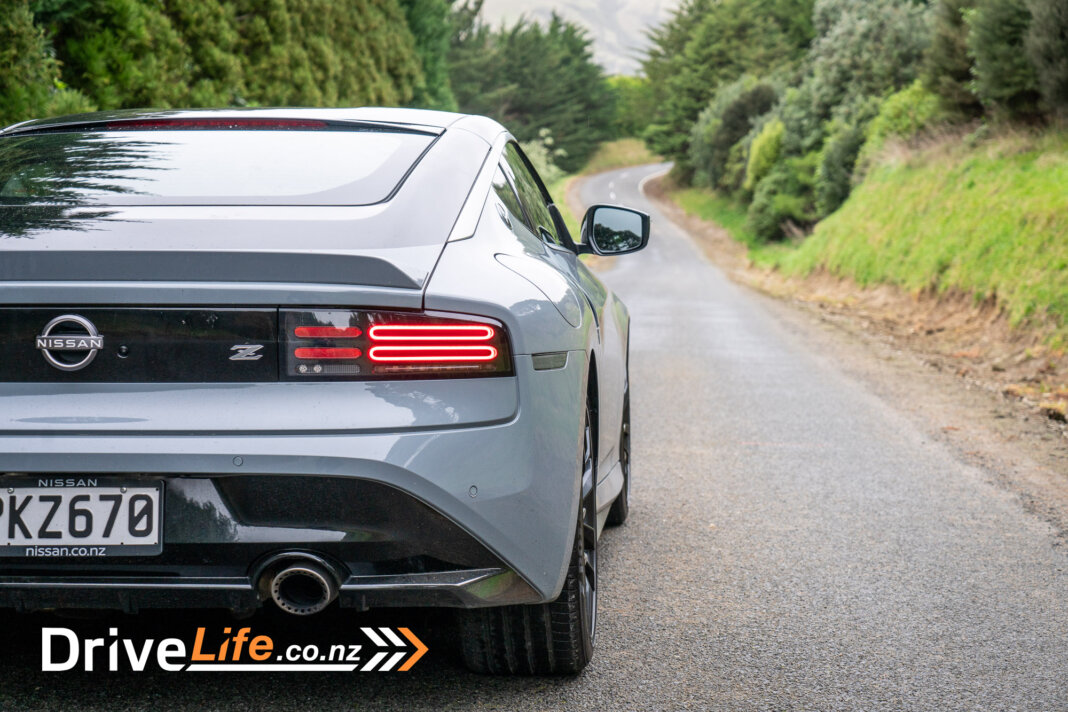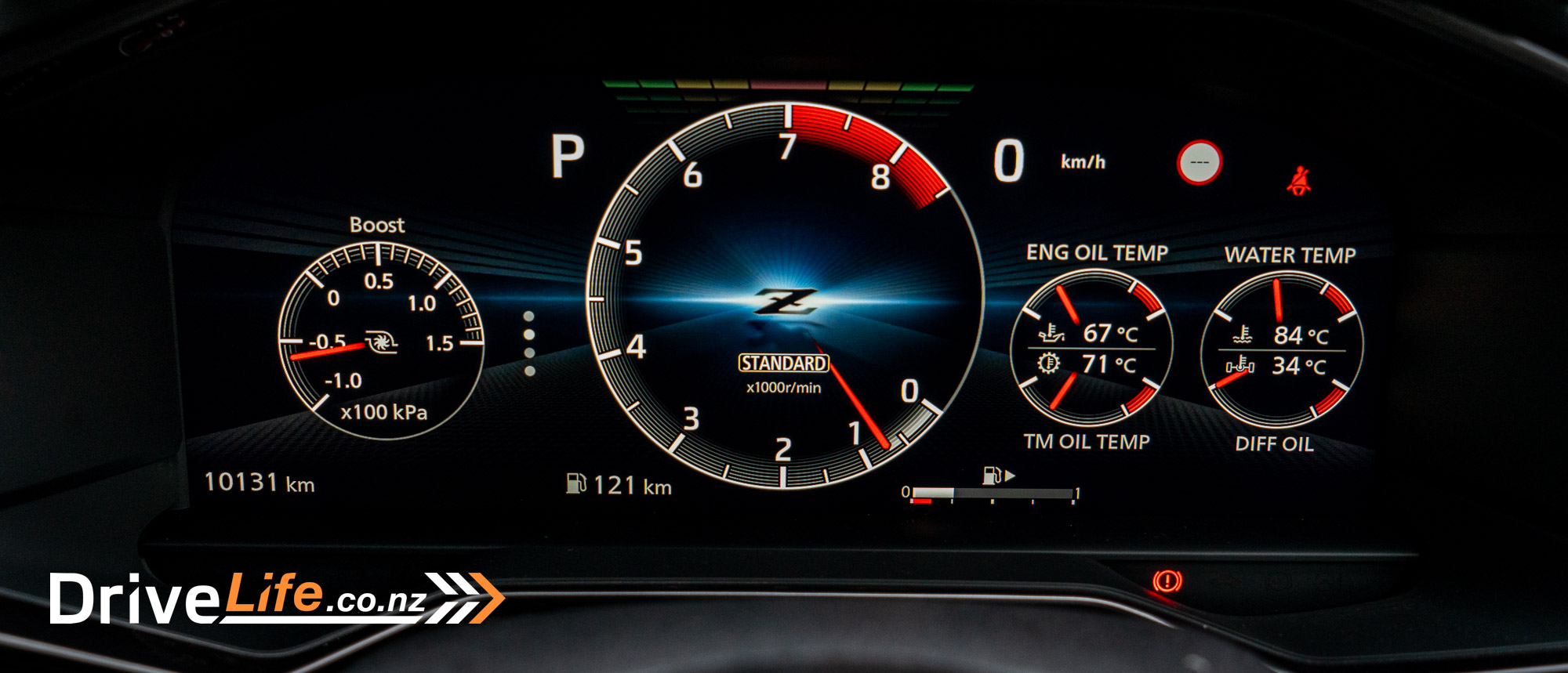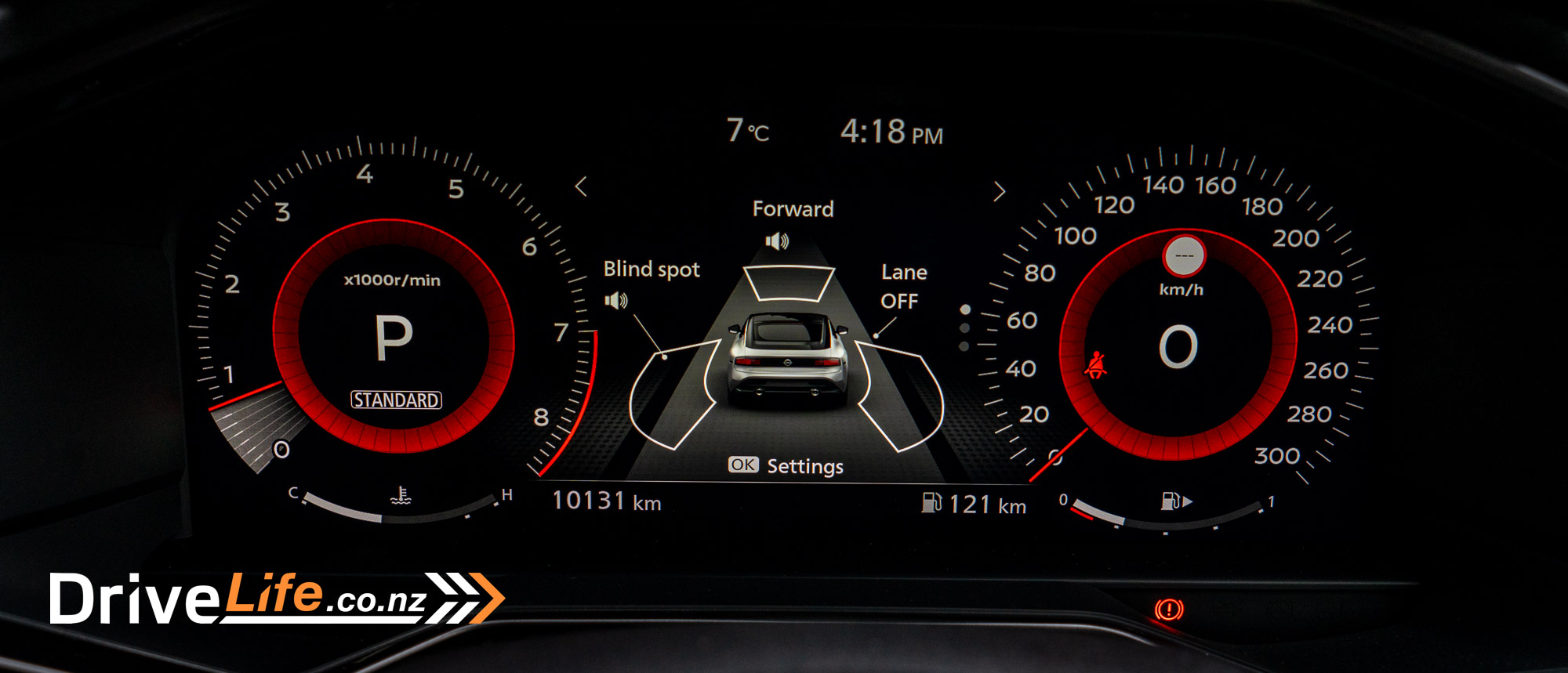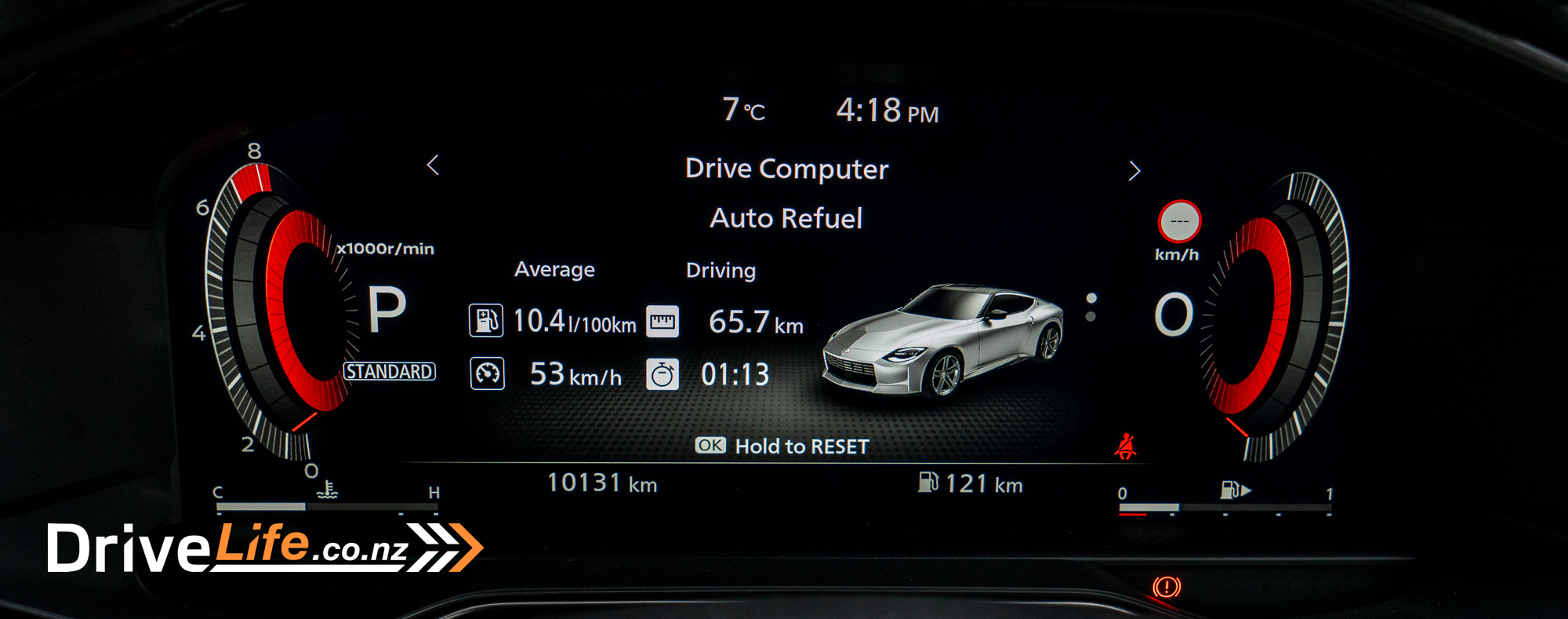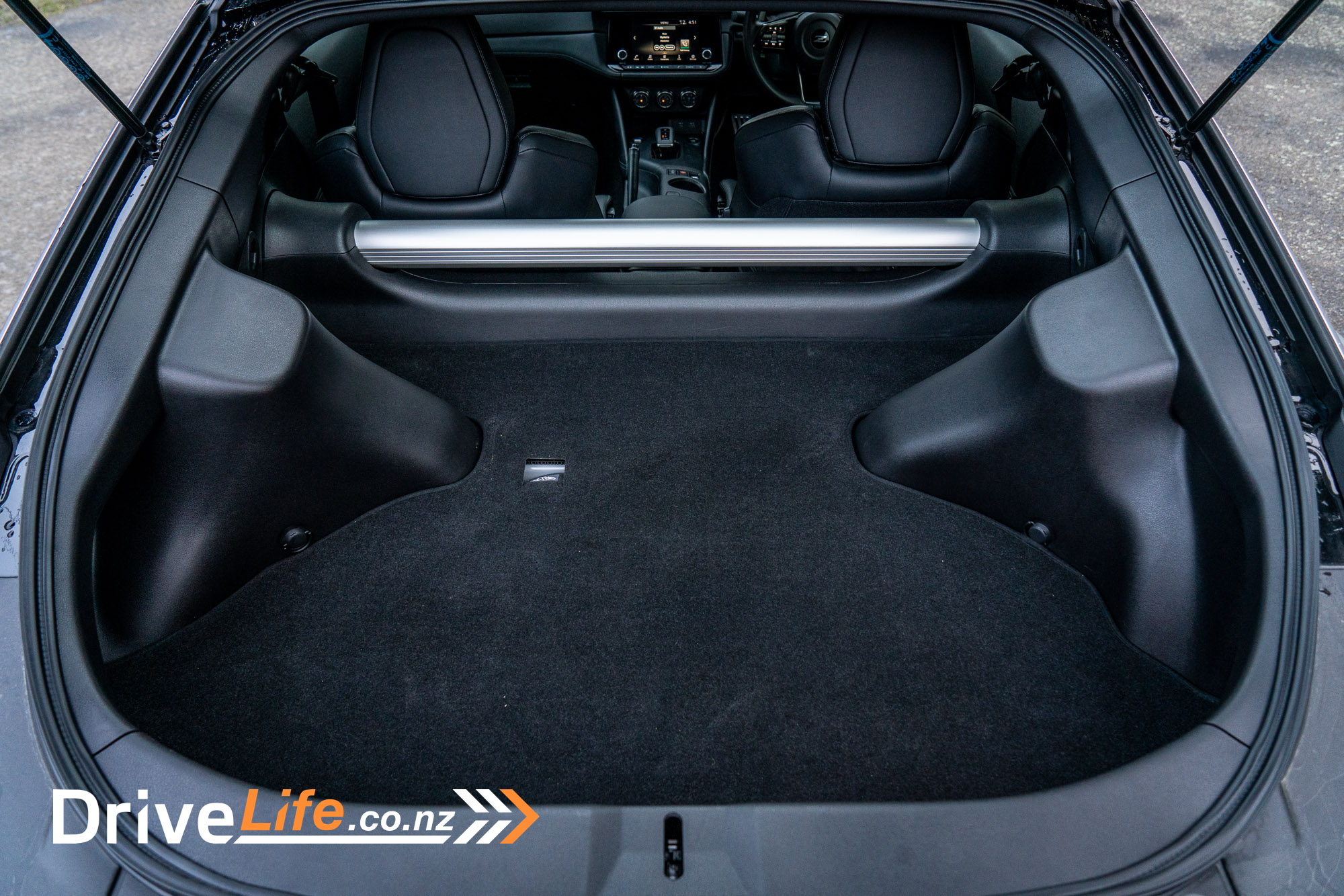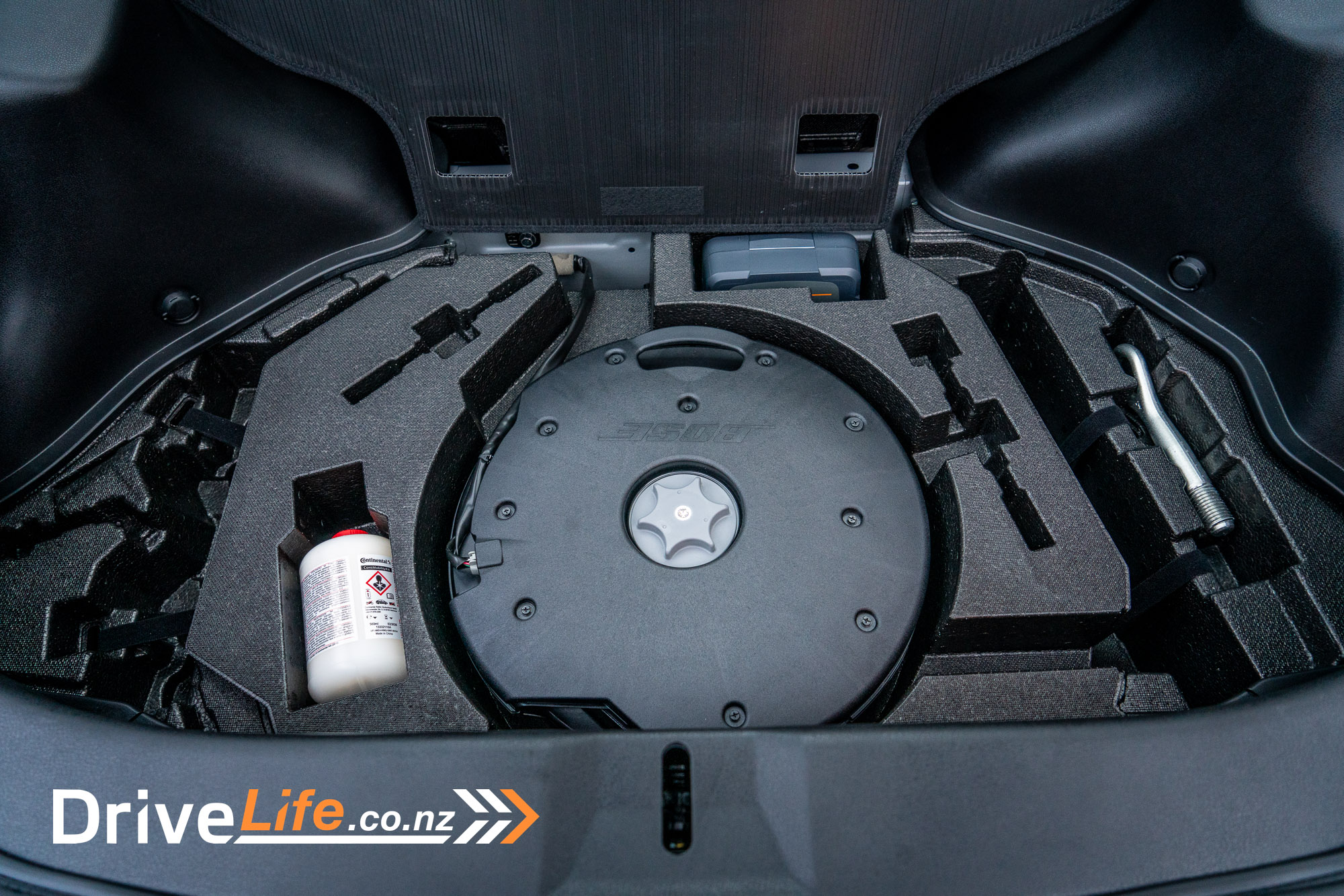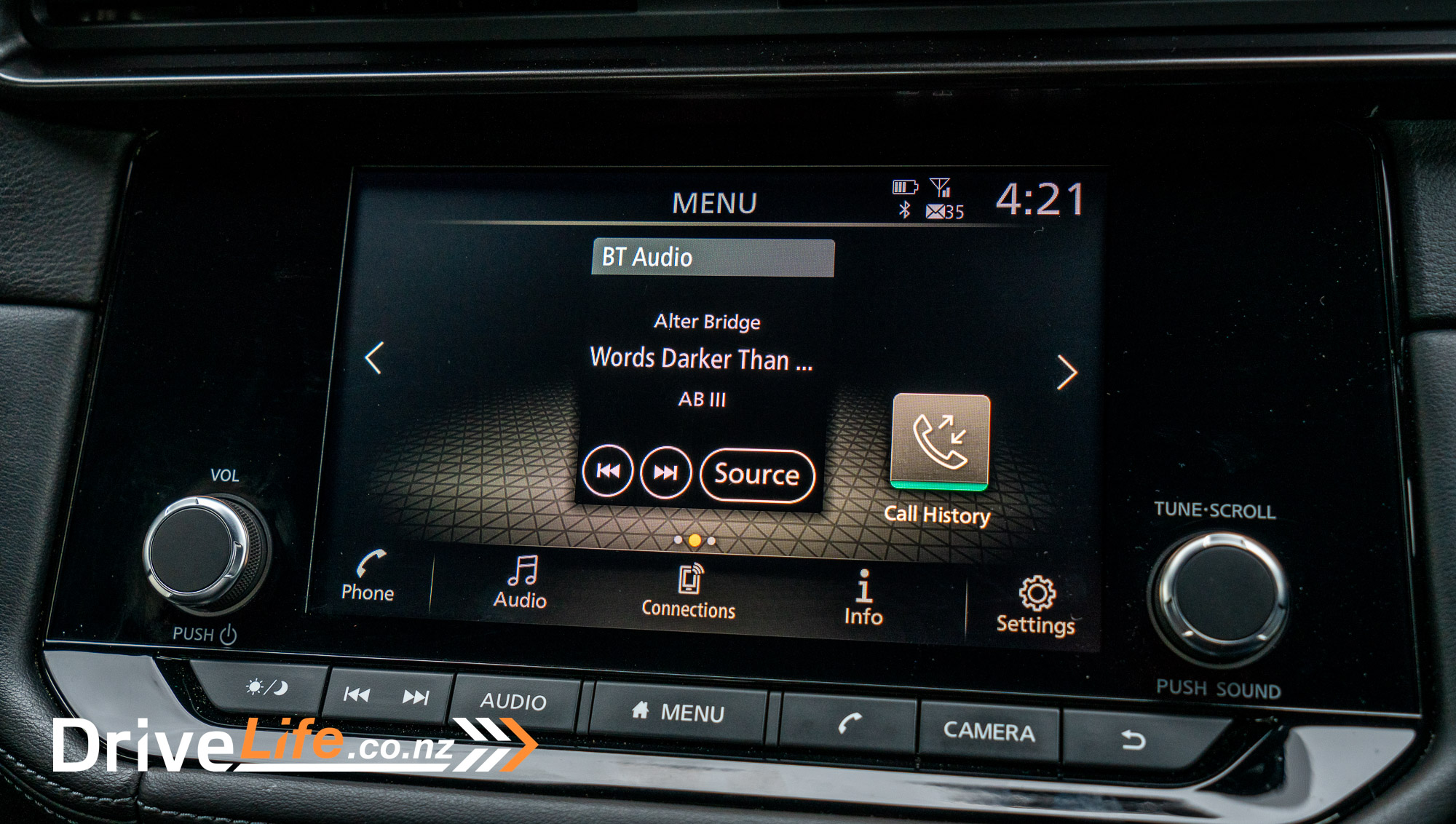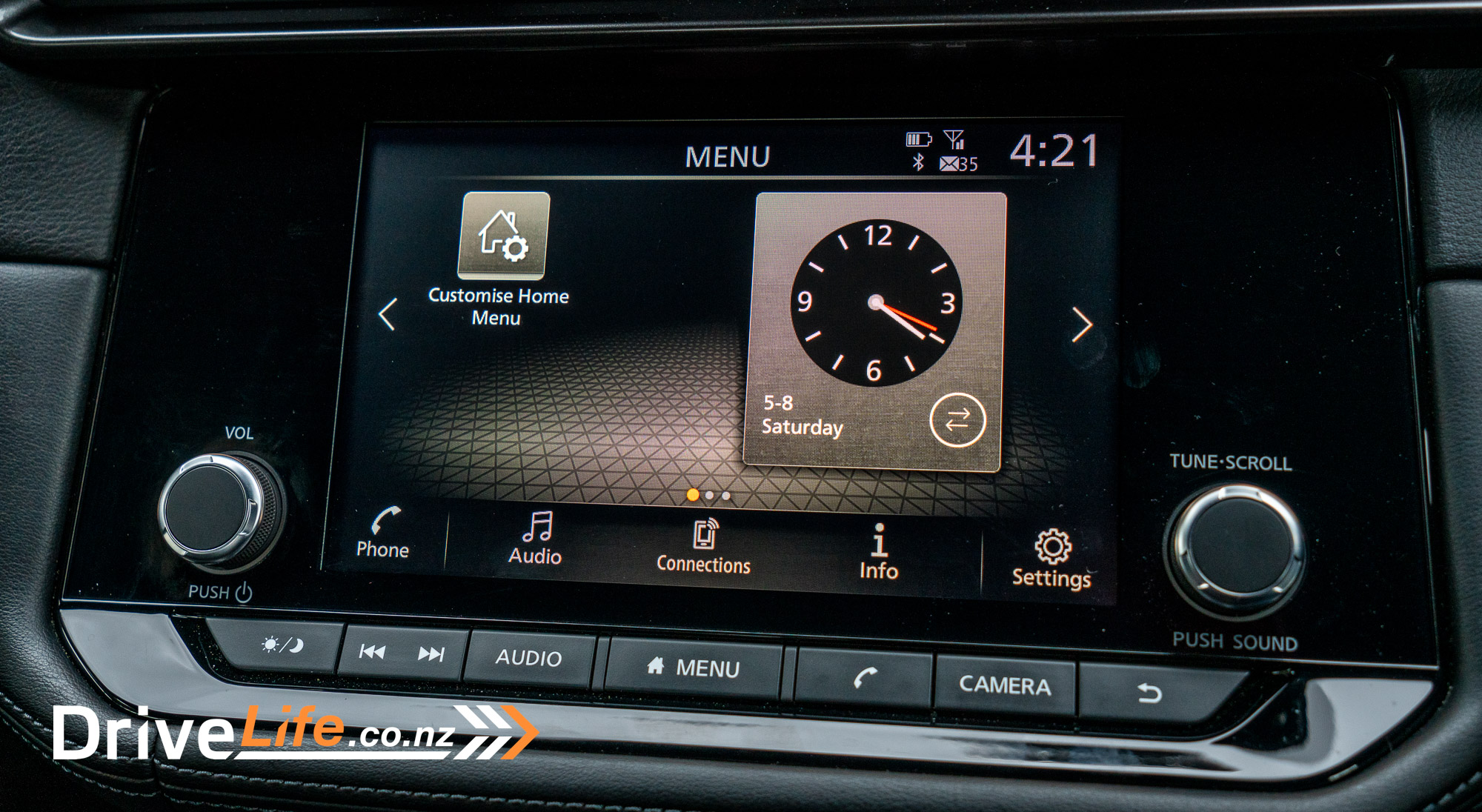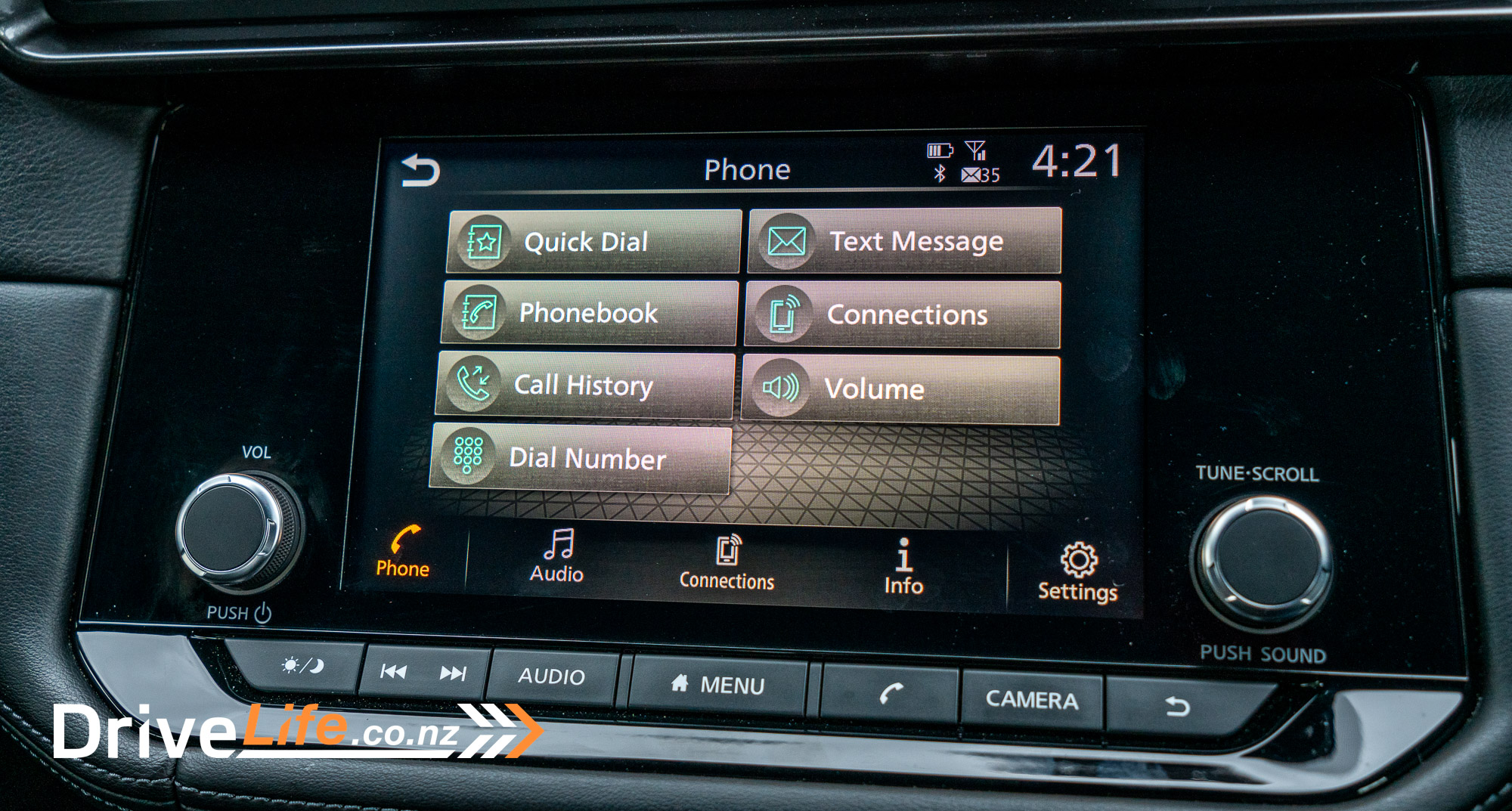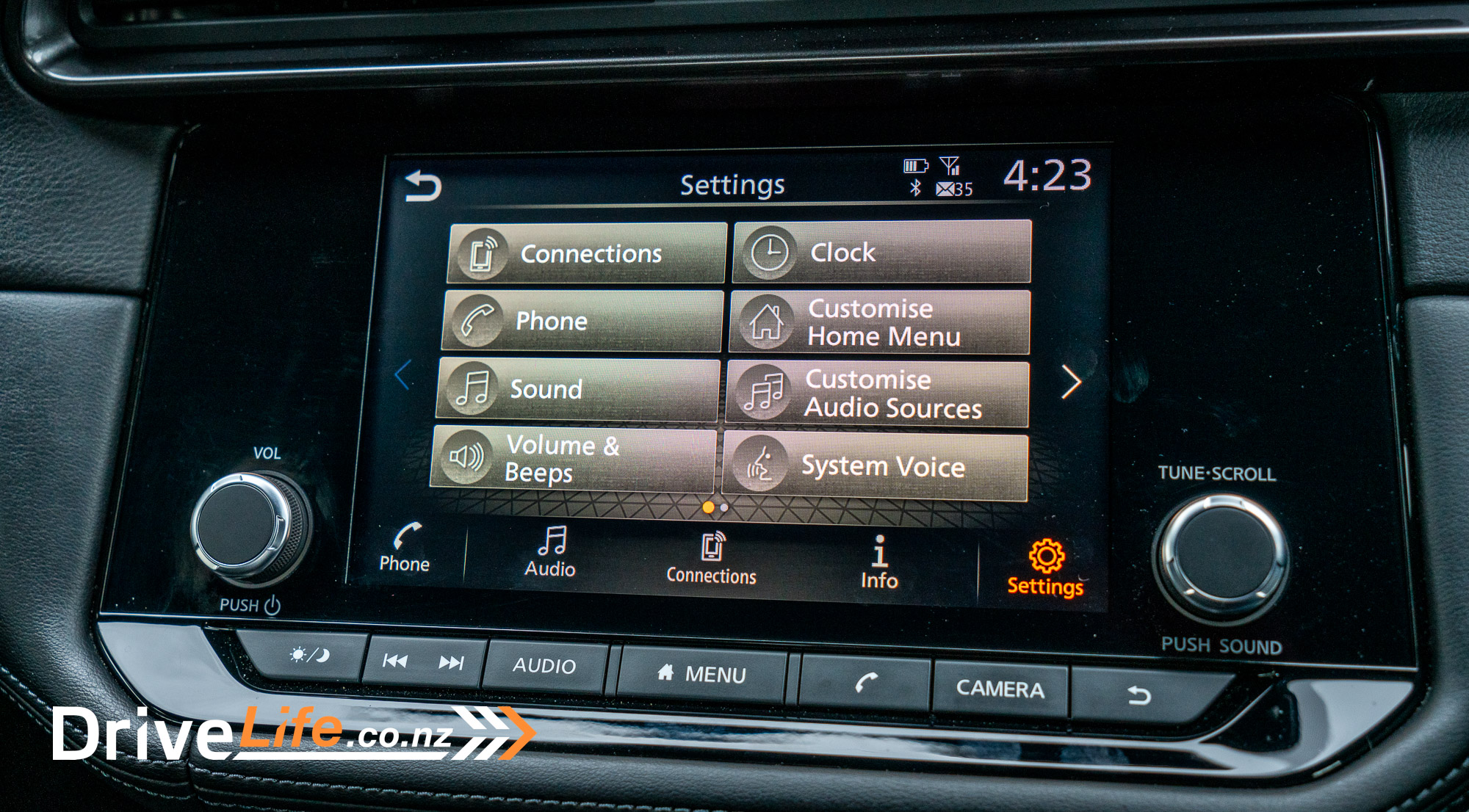Few sports cars can boast the legacy of a Nissan Z. The “Z” namesake was established in 1969, when Nissan (formerly Datsun), introduced the 240Z. The 240Z was a revelation in its day, combining Japanese precision, with Porsche 911 (and even Ferrari Dino) competing acceleration, and gorgeous sports coupe styling to boot. Oh, and did we mention it was affordable?
The Nissan Z well and truly put Japanese sports cars on the map. The 240Z created so much brand equity, the Z has existed for nearly 50 years and through several iterations.
In the 1970’s, there was the 240Z, the 260Z and the 280Z. In 1984, the Z was redesigned and the 300ZX emerged, lasting two generations into 1996. In 2002, the Nissan 350Z debuted, and in 2009 it was replaced by the 370Z. The 370Z stuck around for over a decade, until 2018, when Nissan teased a new Z, dubbed the 400Z. In 2021, the hype became real. Nissan introduced the new “Z” for the modern era – simply called, the Nissan Z (the “400” was dropped).
So, does the modern Z live up to its legacy? Could it be the sports car revelation for the modern enthusiast?
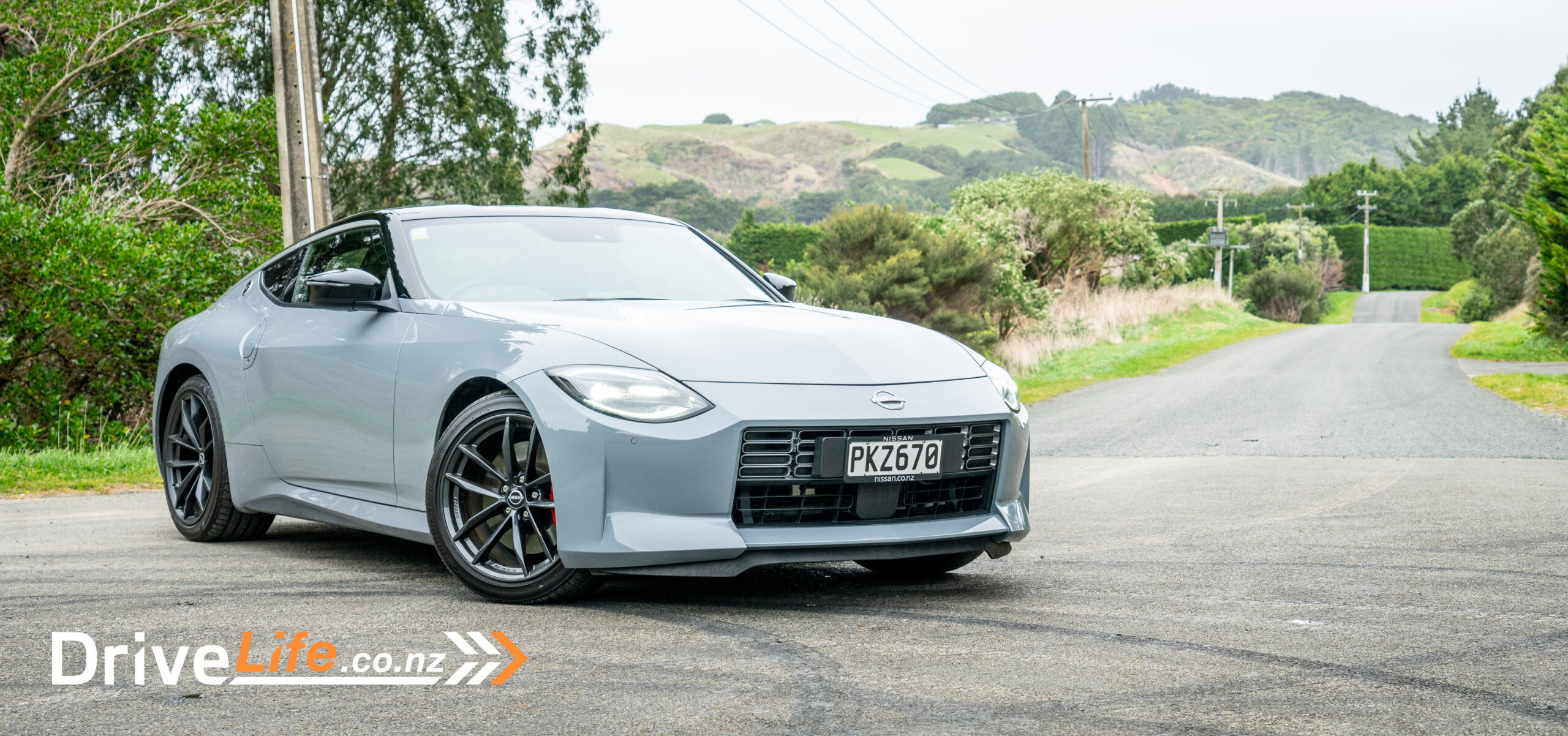
What We Like and Dislike About The 2023 Nissan Z
| What we like | What we don’t like |
| Rowdy performance Old school feel Stunning exterior Fun factor Feels special | Adaptive Cruise Control doesn’t work going downhill Meh interior quality Prices in this segment |
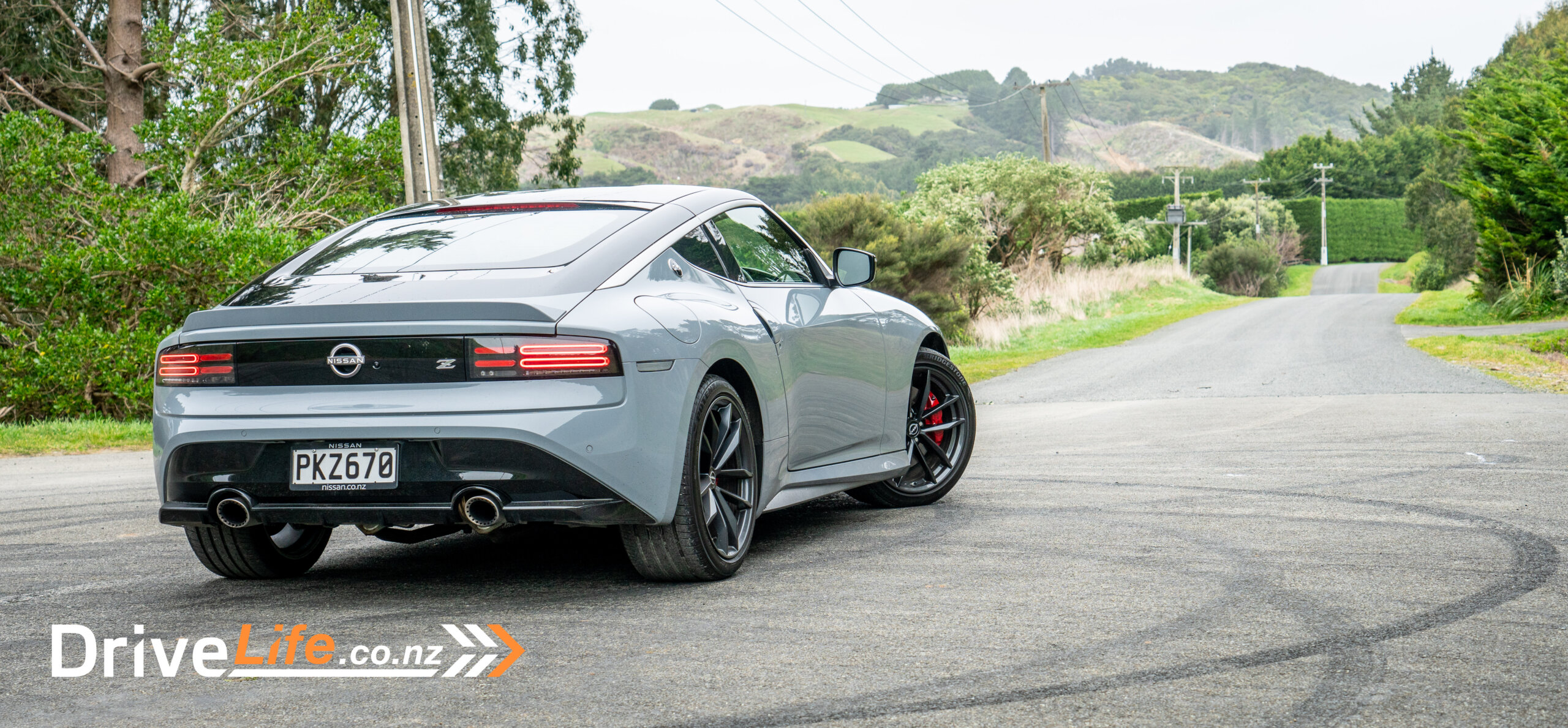
What’s In The 2023 Nissan Z Range?
There are two ways you can have your Nissan Z. You can have it with either a 6-speed manual or a 9-speed automatic. And that’s it, pretty much.
Both cars start from $84,990, before on-road costs and clean car fees.
The Nissan Z range is powered by a turbocharged 3.0-litre V6, producing 298kW of power and 475Nm of torque.Next year, Nissan will be introducing a third option, being the Nissan Z Nismo. This will feature a range of performance tweaks, including a bump in performance to 309kW and 520Nm. It will only be offered with the 9-speed automatic.
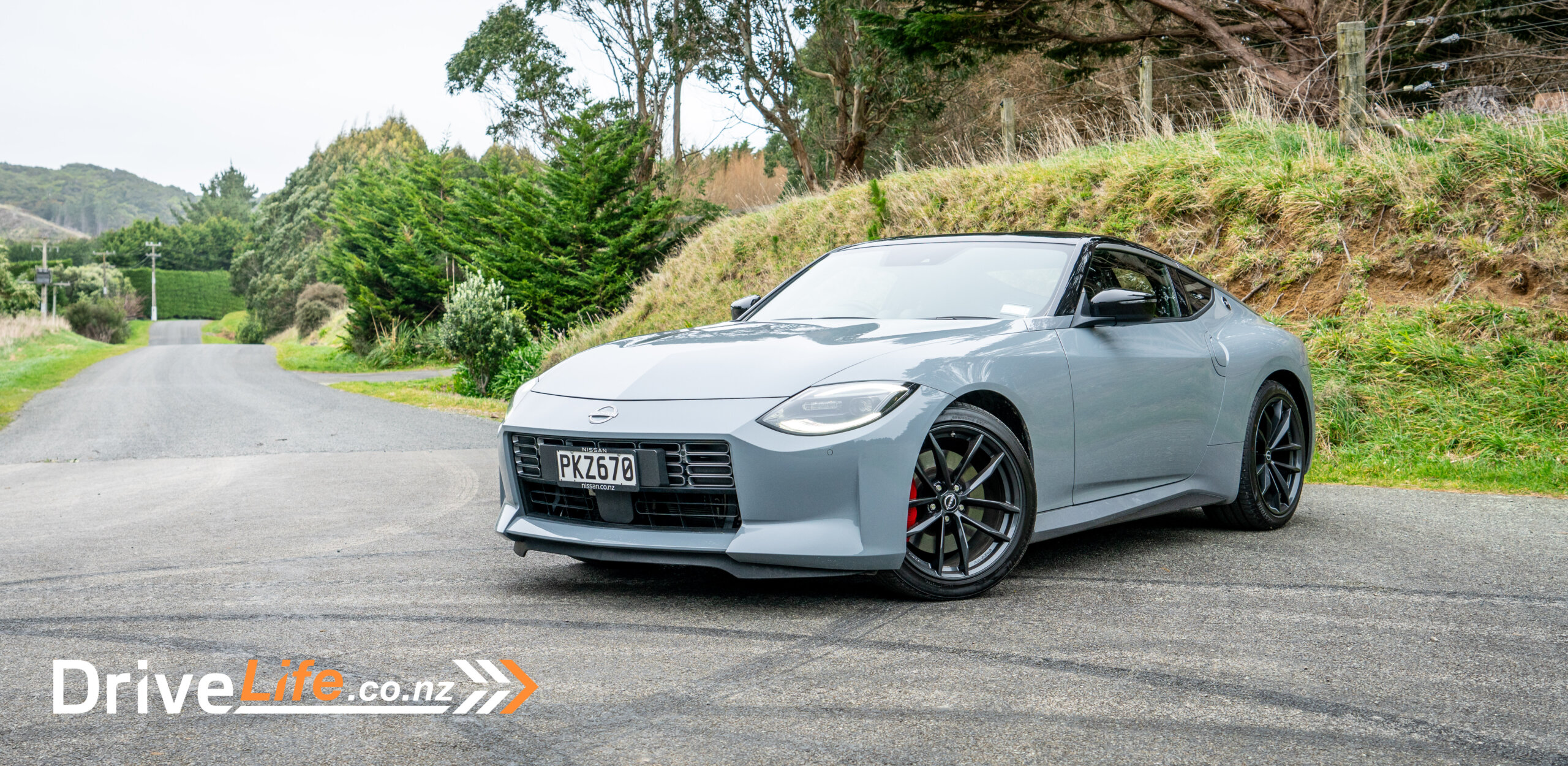
2023 Nissan Z Standard Equipment Highlights
As standard, the Nissan Z offers:
- 12.3” digital instrument cluster
- 19″ forged RAYS alloy wheels
- 3-gauge display (boost, turbo speed, voltage)
- 4-way power-adjust driver seat with manual lifter, thigh & lumbar support
- 4-way power-adjust front passenger seat
- 8-inch infotainment with Apple CarPlay, Android Auto and Bluetooth.
- 8-speaker Bose audio system with Active Noise Cancellation & Active Sound Enhancement
- Aluminium pedals
- Auto-dimming rearview mirror
- Climate control
- Front and rear parking sensors
- Heated front seats
- Heated, illuminated and power-folding door mirrors
- Immobilizer
- Intelligent Key with Push Button Start
- ISOFIX
- LED headlights
- LED tail lights
- Reverse Camera
- Tyre Pressure Monitoring sensor
With great power comes great responsibility. So naturally, the Nissan Z offers plenty of safety equipment, including:
- 6-airbags
- Adaptive Cruise Control
- Blind Spot Warning
- Forward Collision Warning
- Forward Emergency Braking with pedestrian detection
- Hill Start Assist
- Lane Departure Warning
- Rear Cross Traffic Alert
- Traction Control System
- Traffic Sign Recognition
- Vehicle Dynamic Control
The Nissan Z has a variety of colour options to select from, like any good sports car should. There are 9 colours to choose from, being:
- Diamond Black Metallic
- Gun Metallic (grey)
- Solid Orange
- Rosewood Metallic (burgundy)
- Brilliant Silver with Black Roof
- Boulder Grey (matte grey) with Black Roof
- Seiran Blue with Black Roof
- Everest White with Black Roof
- Ikazuchi Yellow with Black Roof
There are two interior finish options. The first is straight black on black, or you can have black with red accents. Either are a no-cost option.
For more information on the Nissan Z, head over to the Nissan New Zealand website.
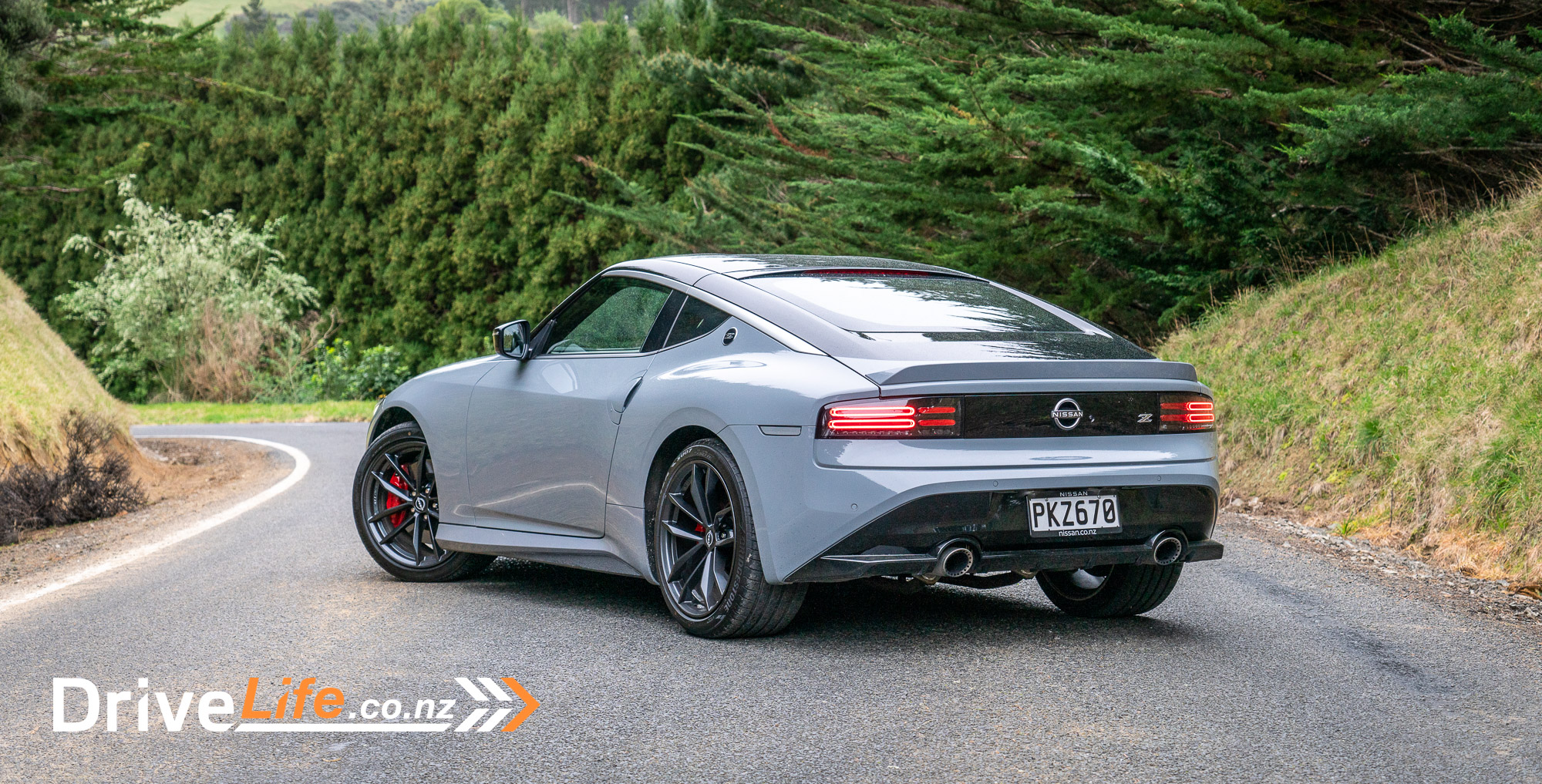
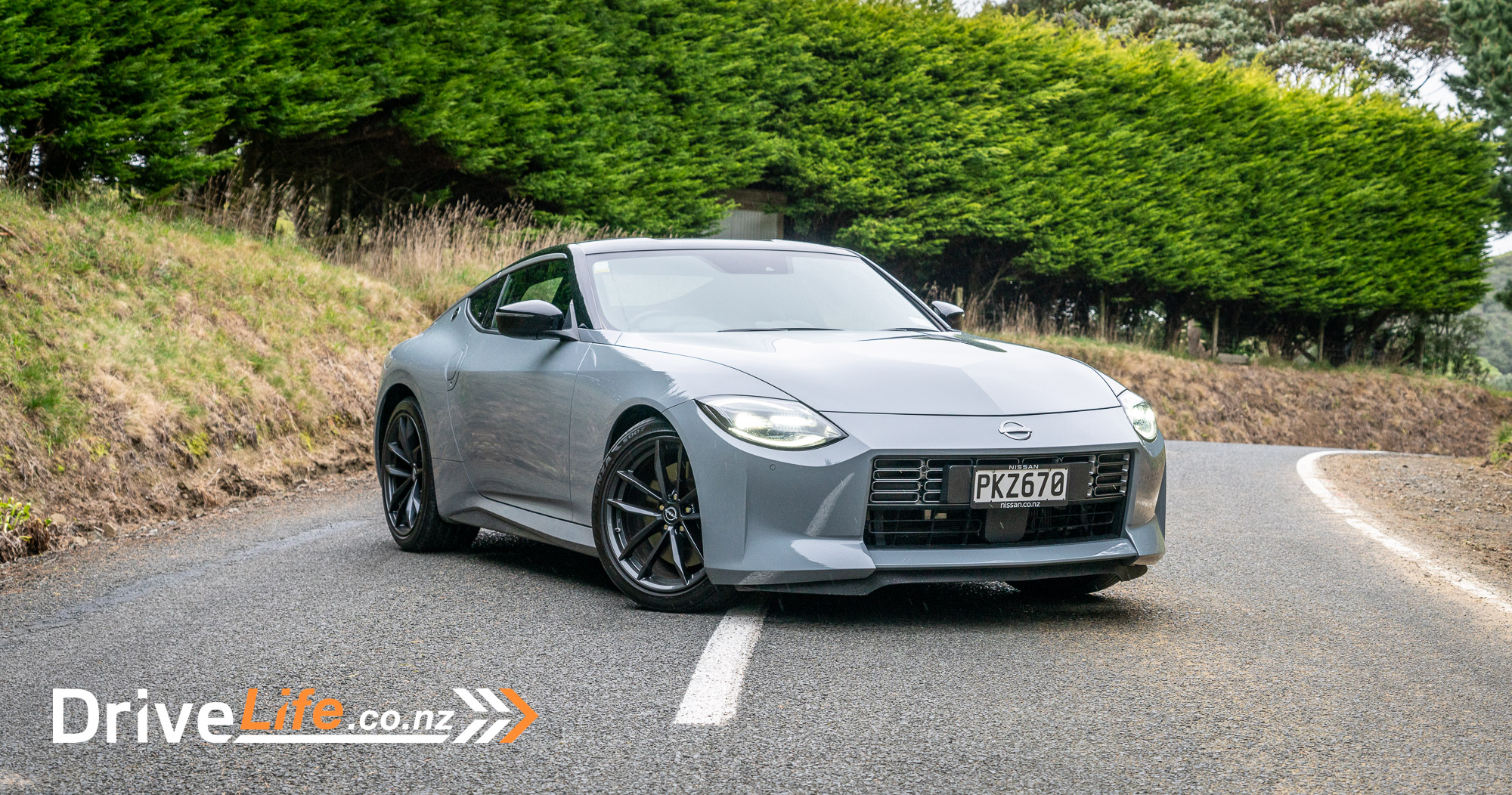
How Does The 2023 Nissan Z Compare To Its Competition?
The market for front-engine, rear-wheel drive sports coupes have sadly been in decline for several years. Although the table is small, there are no bad choices here. All these cars are solid performers.
All prices below exclude the refund or additional cost of the New Zealand Clean Car Programme.
| Make/Model | Engine | Power/ Torque kW/Nm | 0-100km/h, seconds | Fuel, L/100km | Boot space, litres | Price (excl CCP) |
| BMW M240i | 3.0-litre turbocharged inline-6 | 285/500 | 4.3 | 8.0 | 390 | $114,290 |
| Toyota GR Supra | 3.0-litre turbocharged inline-6 | 285/500 | 4.1 | 9.9 | 290 | $96,990 |
| Nissan Z | 3.0-litre twin-turbocharged V6 petrol | 298/475 | 4.7 | 9.8 | 241 | $84,990 |
| Ford Mustang GT | 5.0-litre V8 Petrol | 339/556 | 4.3 | 14.5 | 408 | $84,990 |
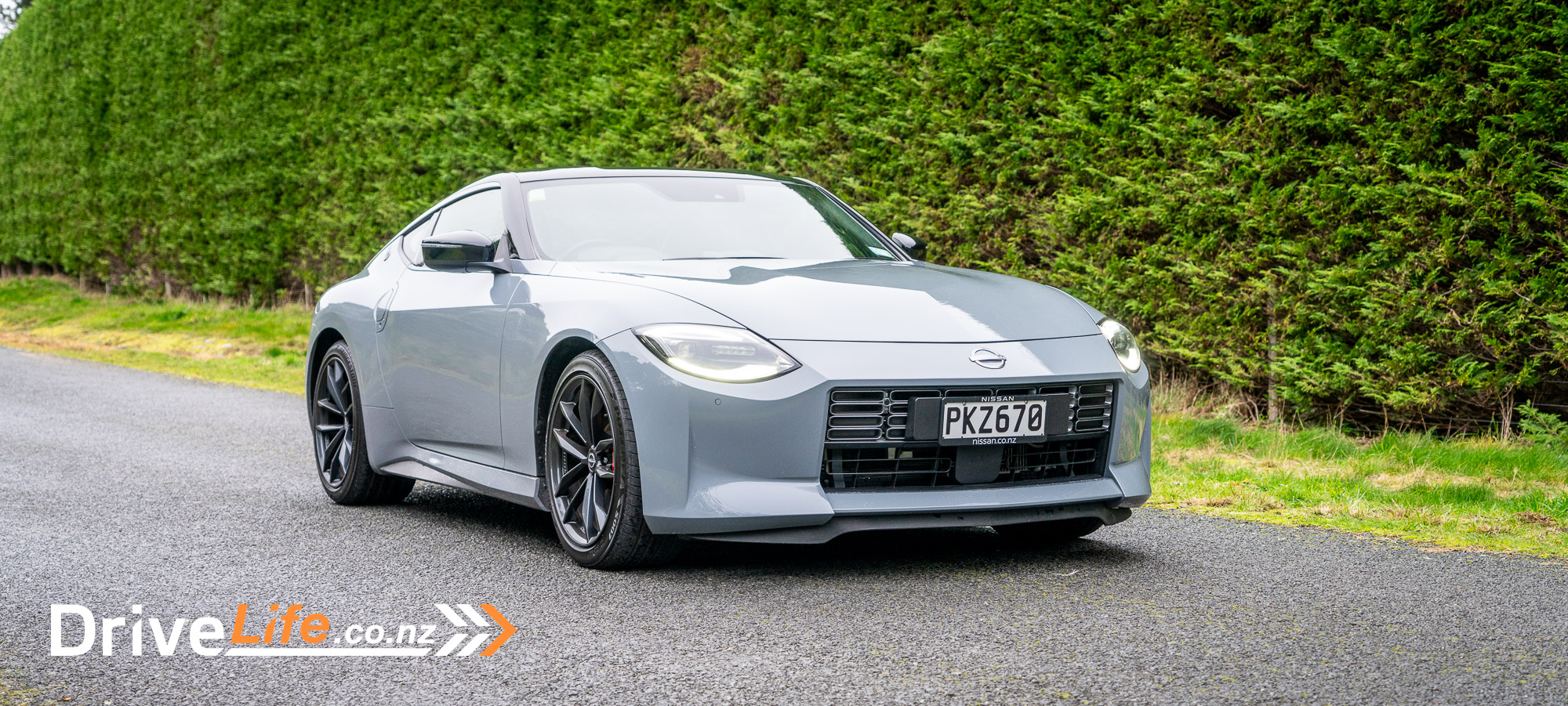
First Impressions Of The 2023 Nissan Z
I can’t be the only one who thinks the new Nissan Z is a gorgeous machine.
Just look at it! The stance, the wheels, the wide arches and a body that appears grafted to look muscular from each angle. It’s a near spot-on spiritual successor as well, drawing retro design cues from all across the Z-car family. It has the long hood and short deck, a rounded-off rear-end and the sloping roof profile which is signature of all the Z’s. It’s a 240Z inspired front-end, a 300ZX-throwback rear.
Yeah, yeah, the mouth is a bit out of proportion with the rest of it, but it’s much better viewed in person. Besides, the rest of it is stunning.
Nissan, well done. You’ve knocked it out of the park.
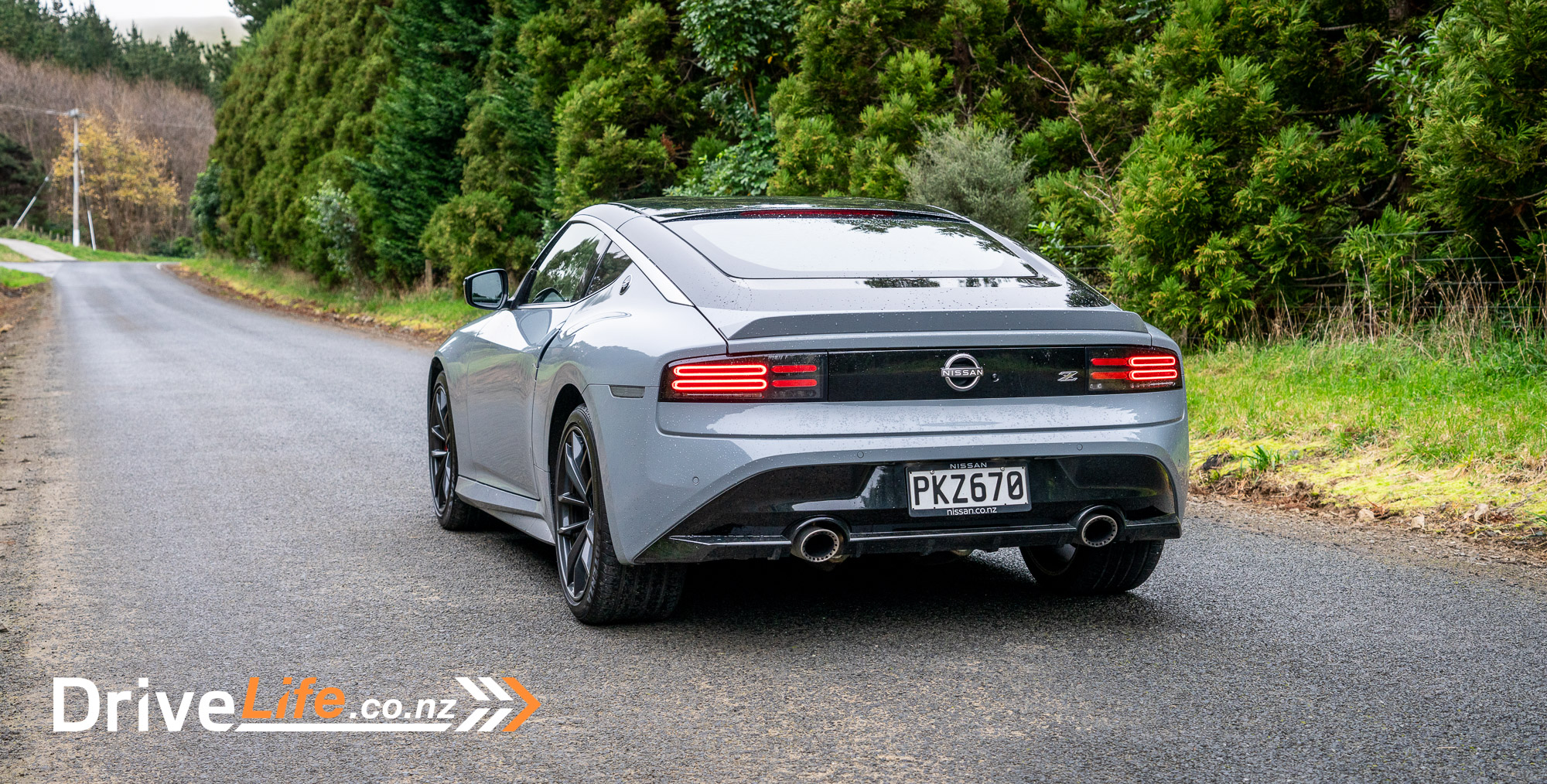
What’s The Interior Like In The 2023 Nissan Z?
Alright, so Nissan has absolutely nailed the outside. What about the inside?
Well, um, the interior is… fine? I suppose?
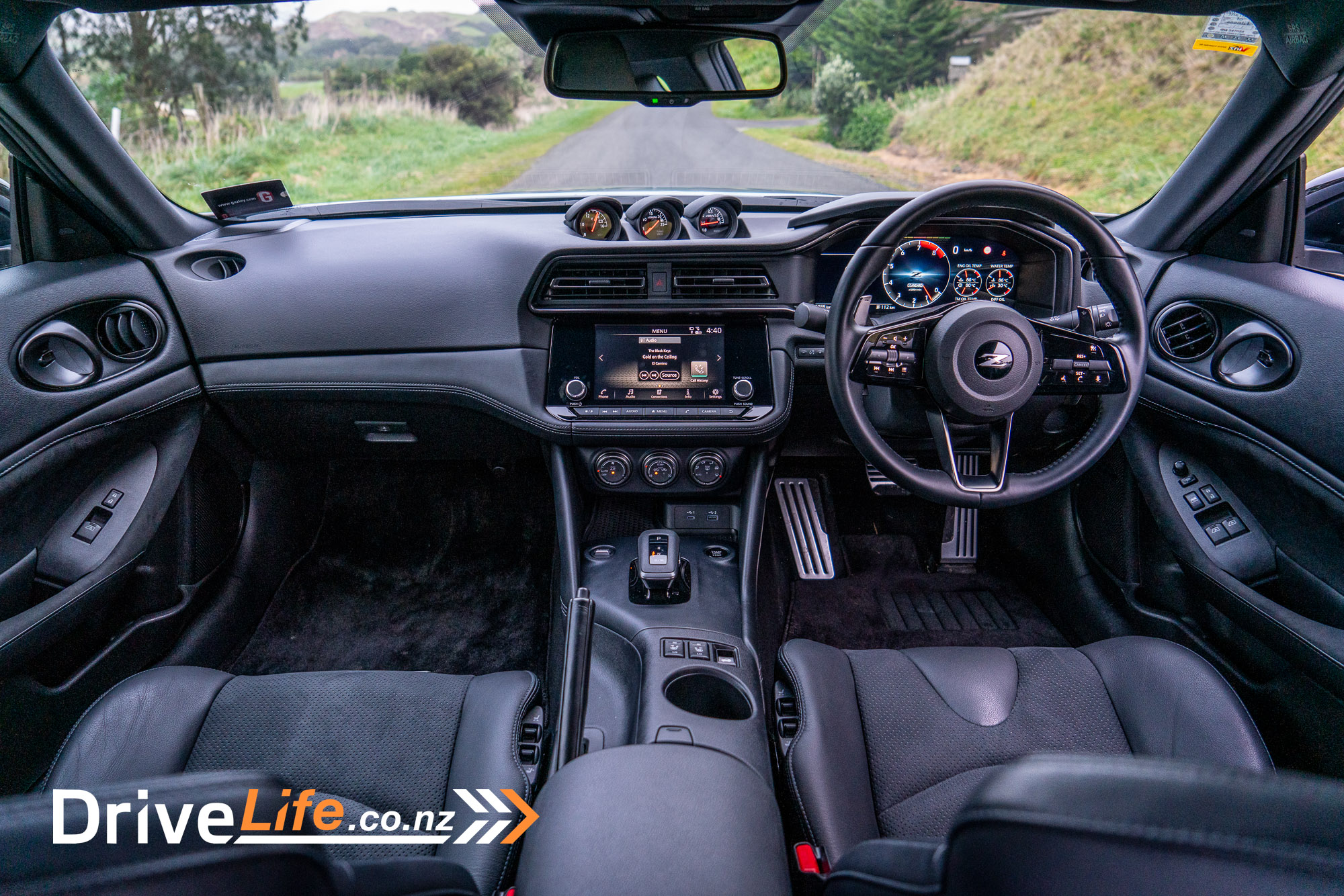
Fine, for a lack of a better term anyway. That’s because you can tell this interior has been built to a cost. Heck, it’s almost as if Nissan spent money by the bucket-load designing the exterior, only to turn the page and realise they’d not yet designed an interior.
Let’s start with the good, shall we?
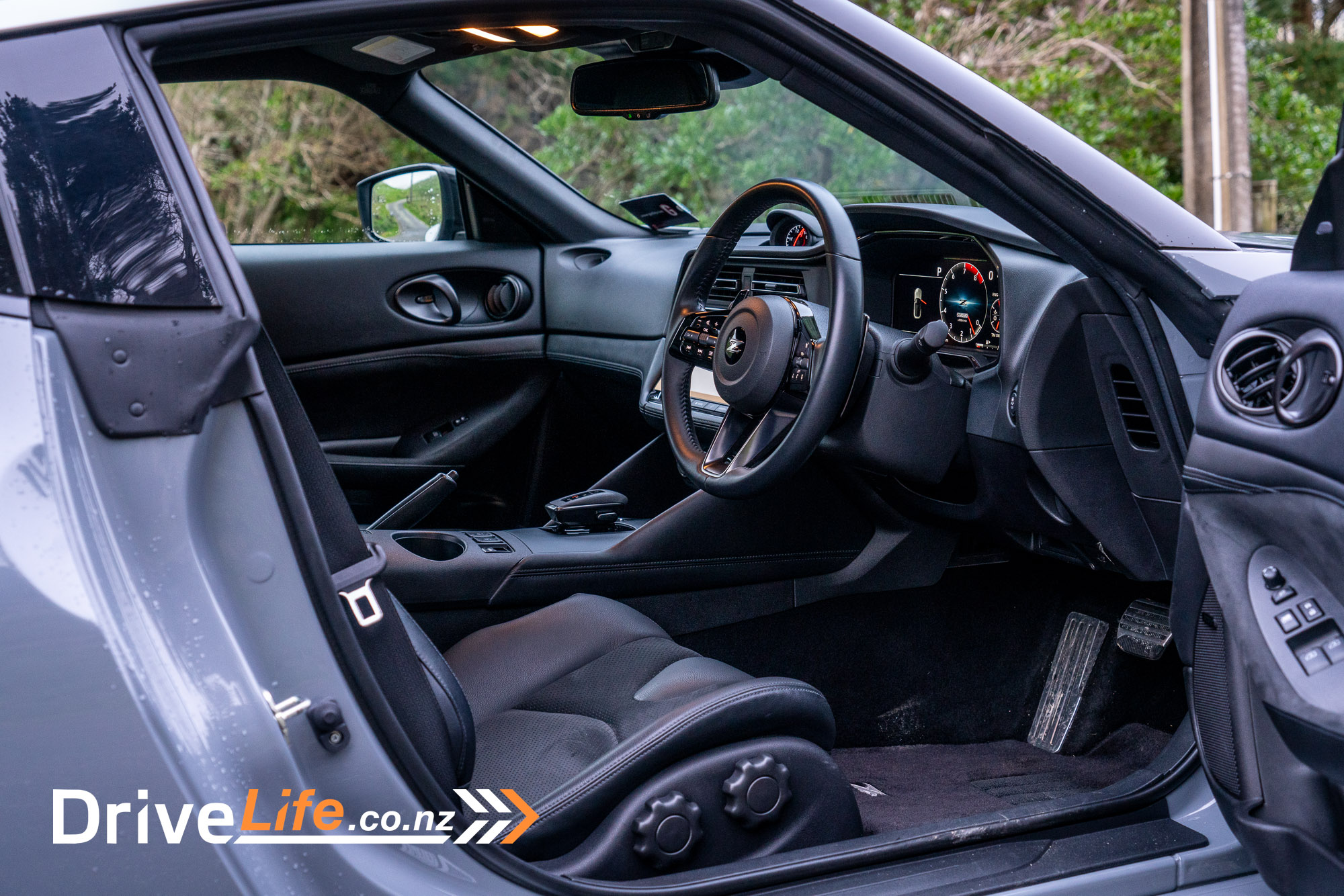
The interior is driver focused, and all the ergos are nearly spot on. The driving position is good, the controls are where you’d expect them to be, and it’s quite easy to set yourself up nicely.
In front of the driver is a high-quality, high-res 12.3’’ digital dash cluster, which I rather like, despite it being shared with other Nissans. Nissan has also added a snazzy “Z” display, which is specific to the Z (obviously).
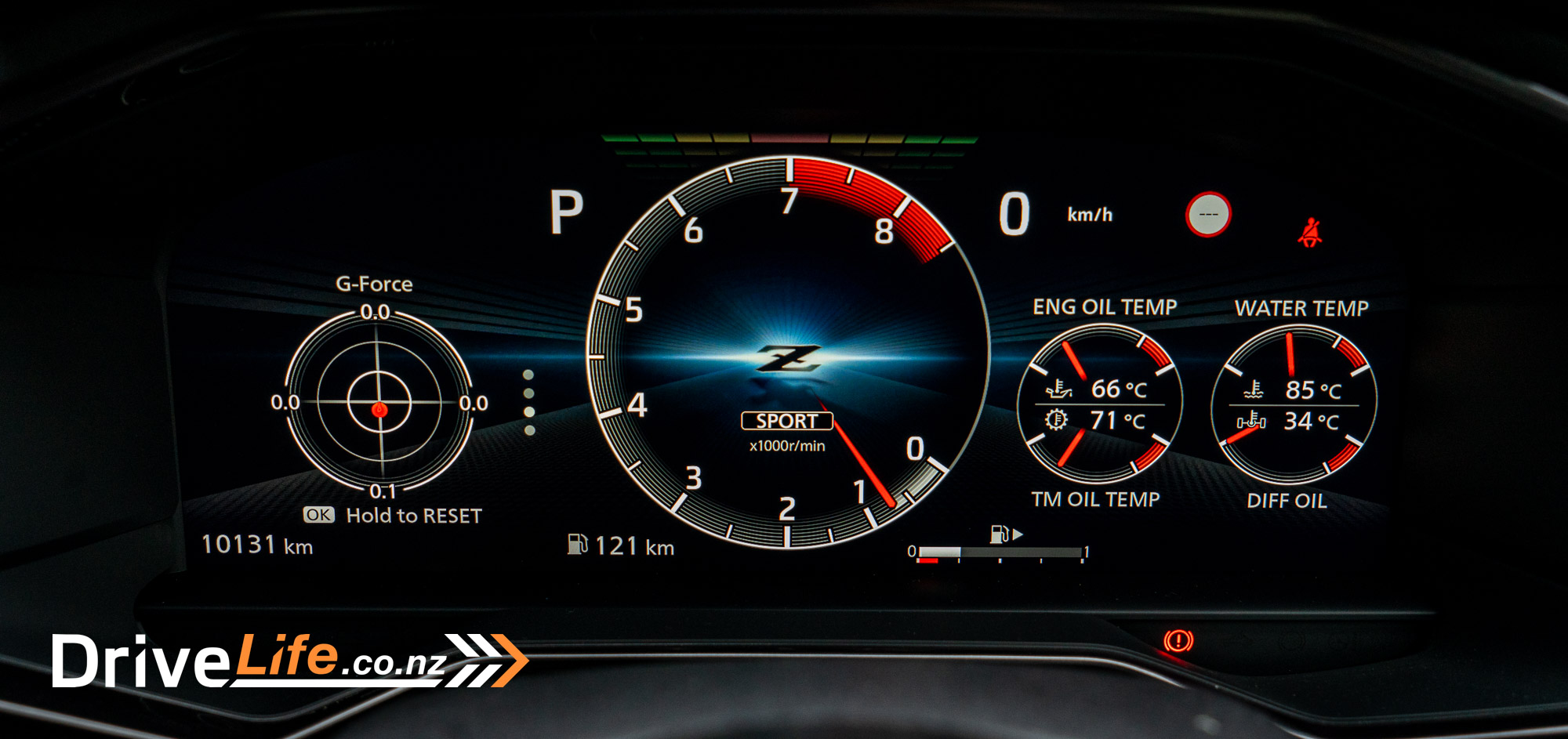
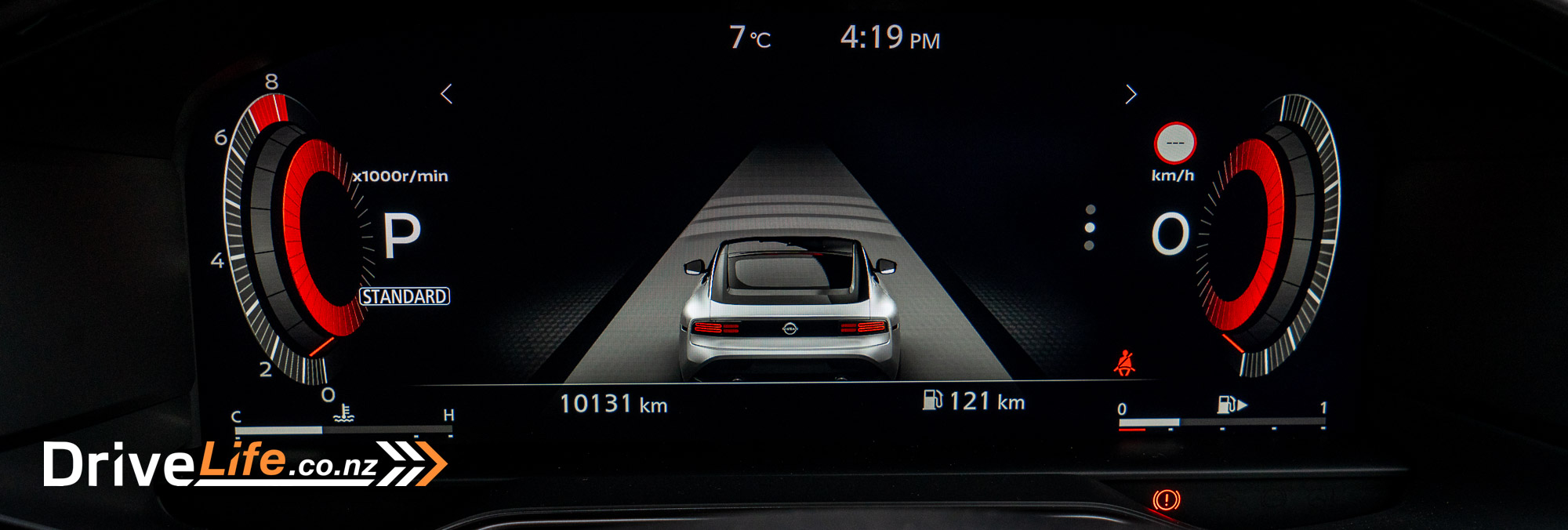
Up the top of the dashboard are 3-gauges – a voltmeter, a boost gauge, and turbo fan speed – which are a throwback dashtop gauges of the original 240Z and have featured in nearly every Z car since. Sure, you could argue that they’re no longer needed in a world of digital gauges, but it would have been a crime to ditch them.
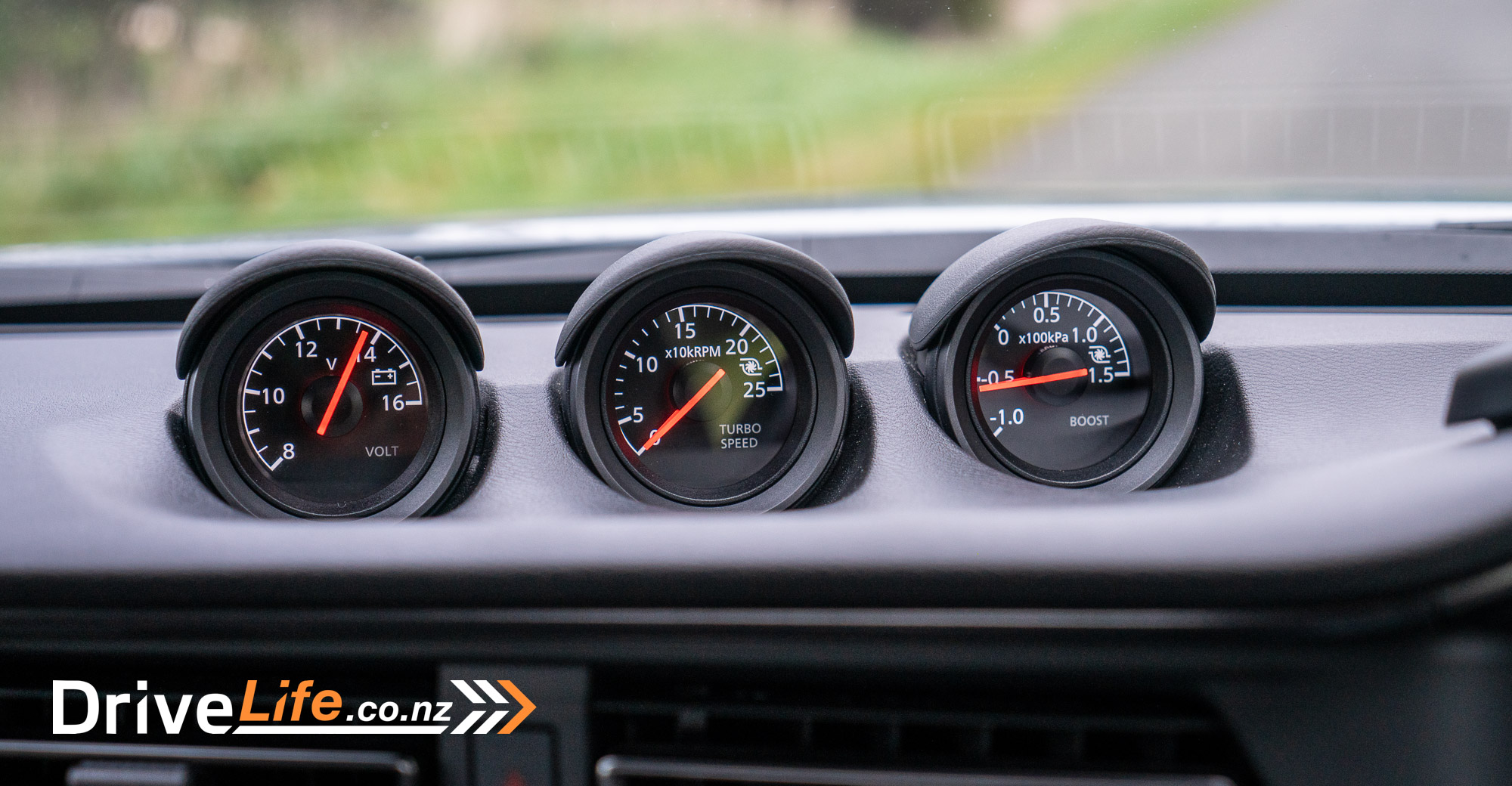
There’s also a decent amount of storage inside the cabin. Decent, for a sports coupe anyhow. The boot is shallow, but the area is wide meaning it will easily take a few weekend bags. There’s also a few cubbies and flat platforms behind the seats, to store all your little odds and ends.
Above all, I appreciate this cabin because there’s little B.S. Nissan seems to have focused on getting the basics right with their seemingly limited budget, and they’ve largely gotten it right. There’s no unnecessary tech and no gimmicks – it’s a straightforward affair.
So, what about the not so good?
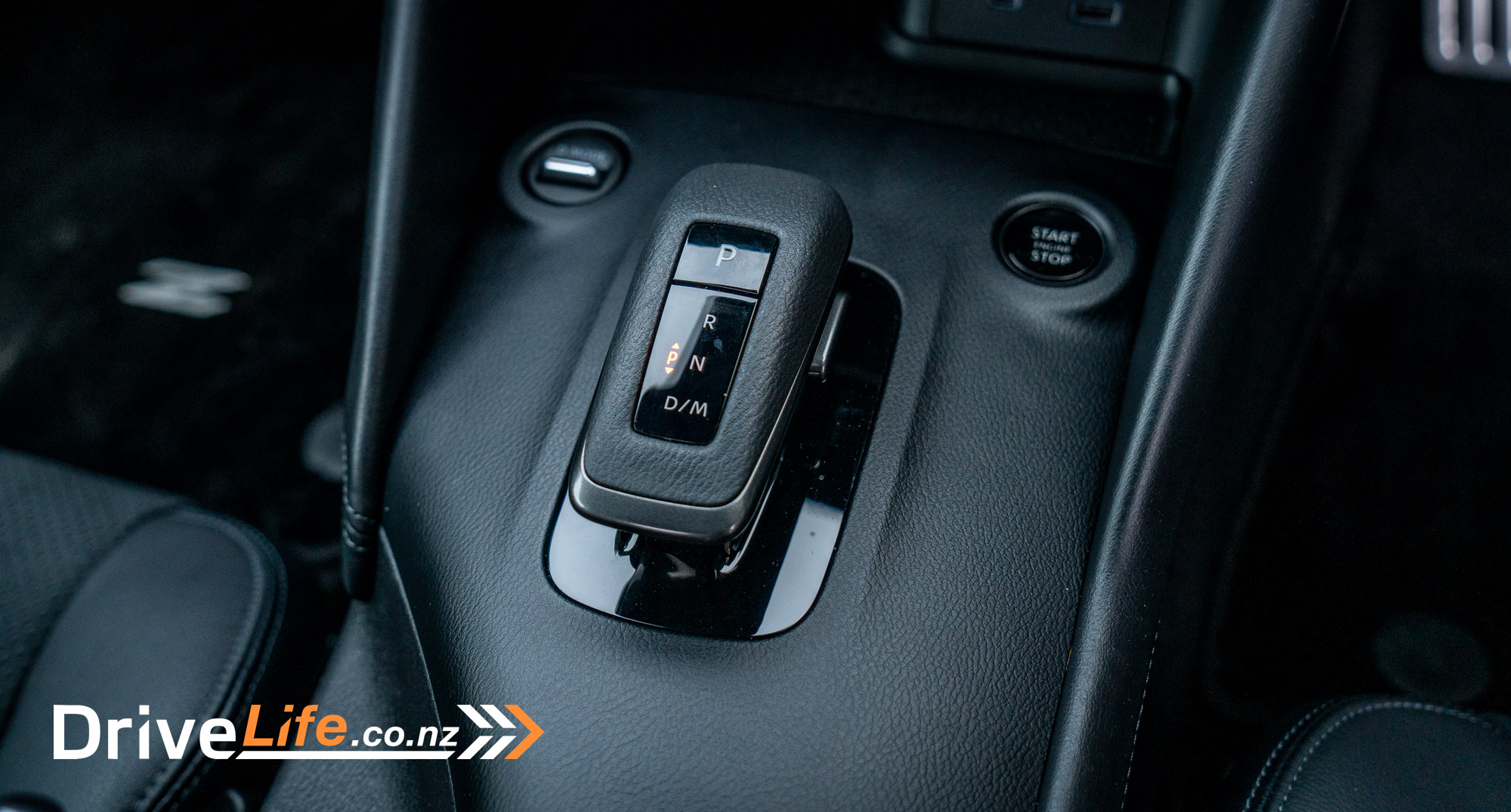
Well, straightforward might be a euphemism for otherwise saying that it is pretty basic in here.
For starters, the material quality isn’t particularly good. The interior plastics are shabby in places, and there’s a few questionable finishes, no better shown than where the stitching on the door and dashboard meet – they didn’t design them to line up properly.
Generally, the build quality isn’t up to par with its performance car rivals, in particular, the Toyota Supra and the Honda Civic Type R.
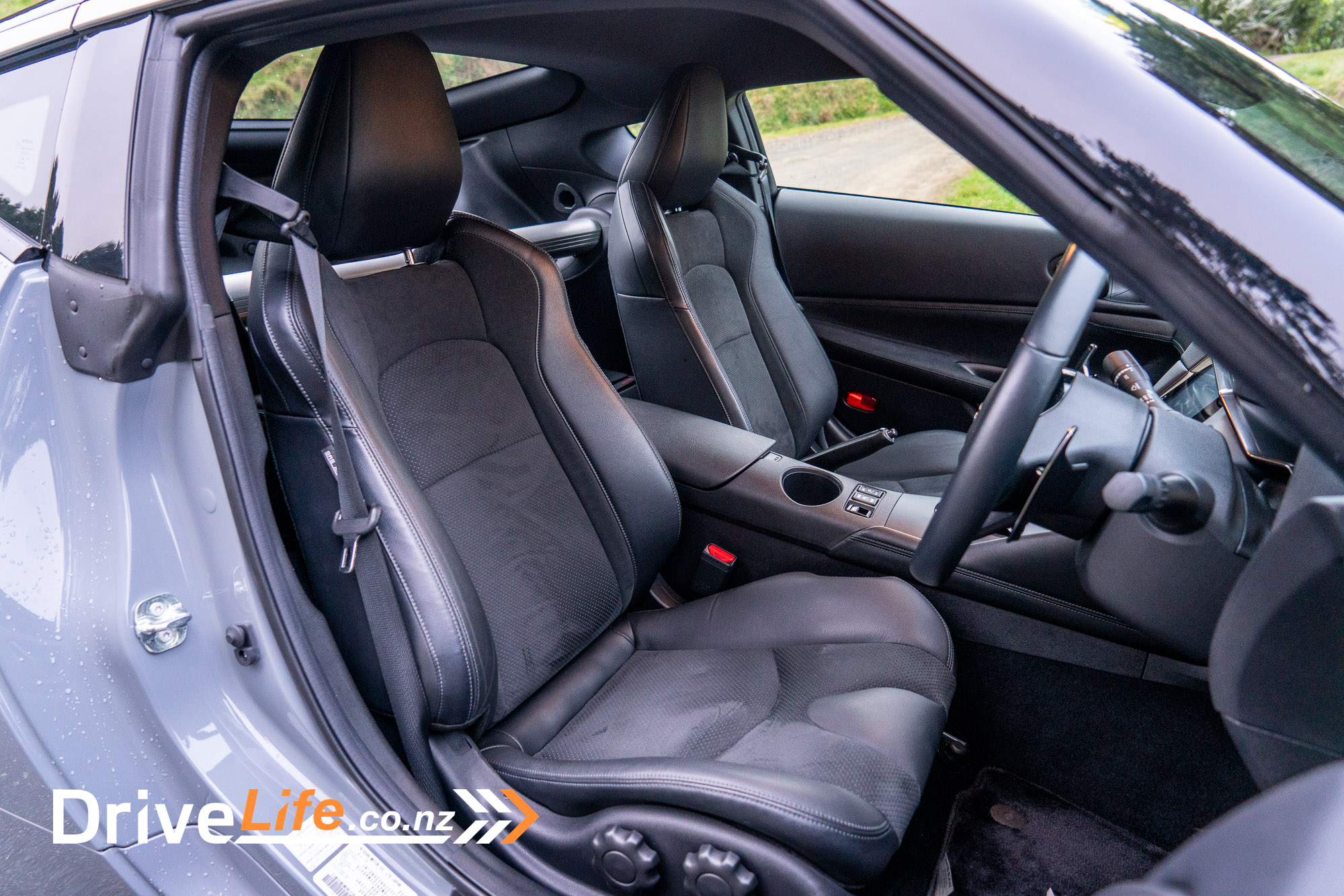
There are a few more equipment gripes too. Firstly, the driver and passenger seats are different designs. The notable difference is that the passenger seat is missing the raised leather centre, which the driver has. Speaking of, these seats aren’t anything special. They’re passable for comfort and supportiveness, but in a sports-car that’s pushing towards $90,000, it’s not unreasonable to want something tad more special. Perhaps my view is slightly tainted, having recently been in the Honda Civic Type R.
The central infotainment also follows the basic theme. It has the usual Apple CarPlay, Android Auto and Bluetooth, but otherwise there’s not much to it. Outside of these applications, the system isn’t particularly responsive nor high quality. Fortunately, the infotainment is connected to a decent Bose audio-system. Driving tunes are important in a sports car, after-all.
So yeah, the Nissan Z’s interior isn’t spectacular, but it’s far from terrible. My only true disappointment is that it could feel more special for the price. In my view, having high quality items, like a good seat, or steering wheel, or shifter, are all important to the experience of a sports car. You want it to feel special, even when stuck behind someone afraid to drive at the speed limit. Frankly, the Z’s interior doesn’t feel as special as some of its modern competitors.
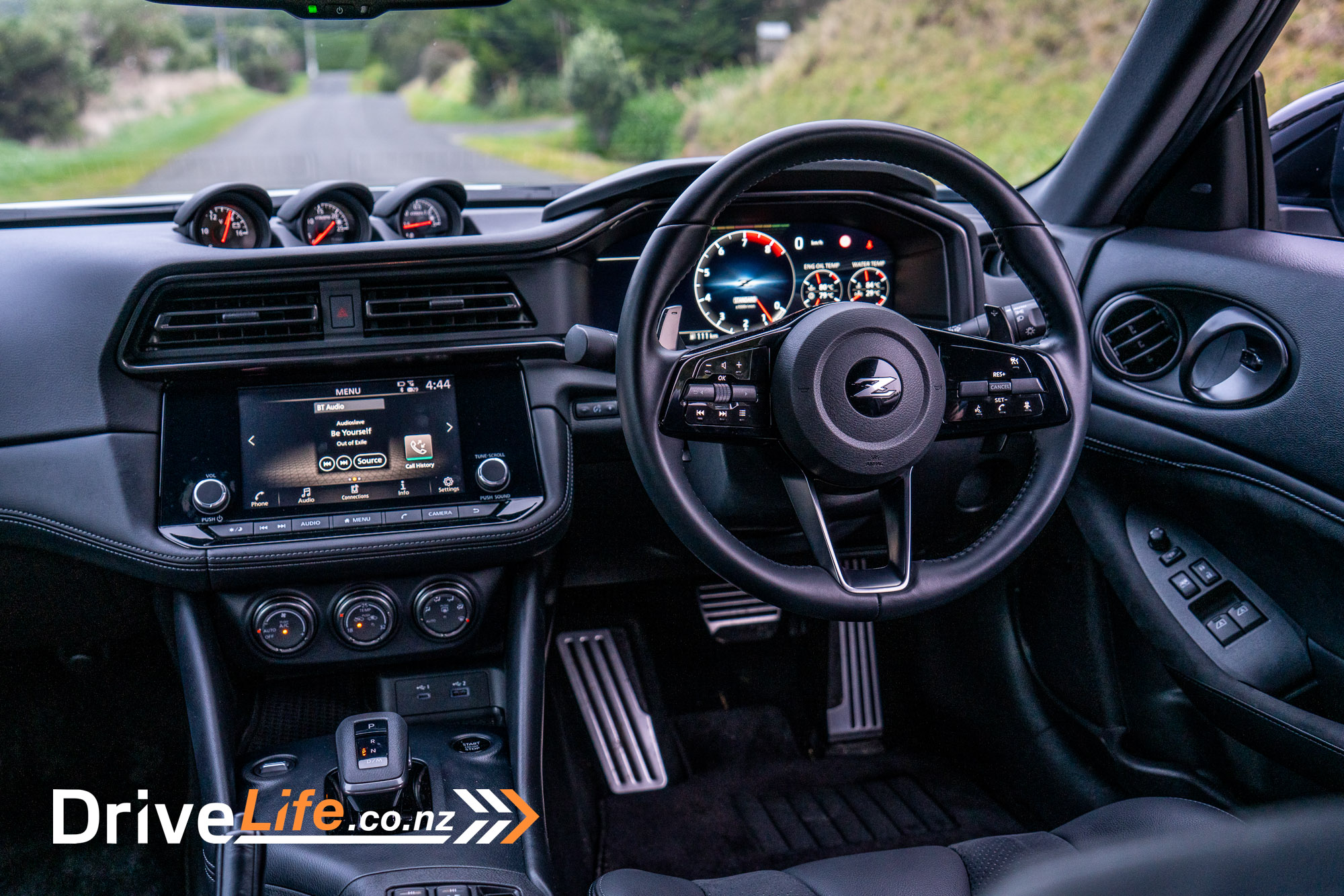
But, none of this is a complete deal-breaker for the Z.
What’s The 2023 Nissan Z Like To Drive?
So, between the stunning exterior, and say, the um, middling interior, what is the Nissan Z like to drive? Did they really spend it all on the exterior?
Fortunately, Nissan seems to have had ample resourcing for developing the Z’s driving experience. In brief, the Nissan Z is a riot to drive. But, perhaps not in the way you’d expect.
What do I mean by that? Well, the Nissan Z doesn’t have the delicacy of a Mazda MX-5, nor does it have the scalpel-like handling precision of a Honda Civic Type R. Instead, the Nissan Z behaves more like an old-school, muscular GT.
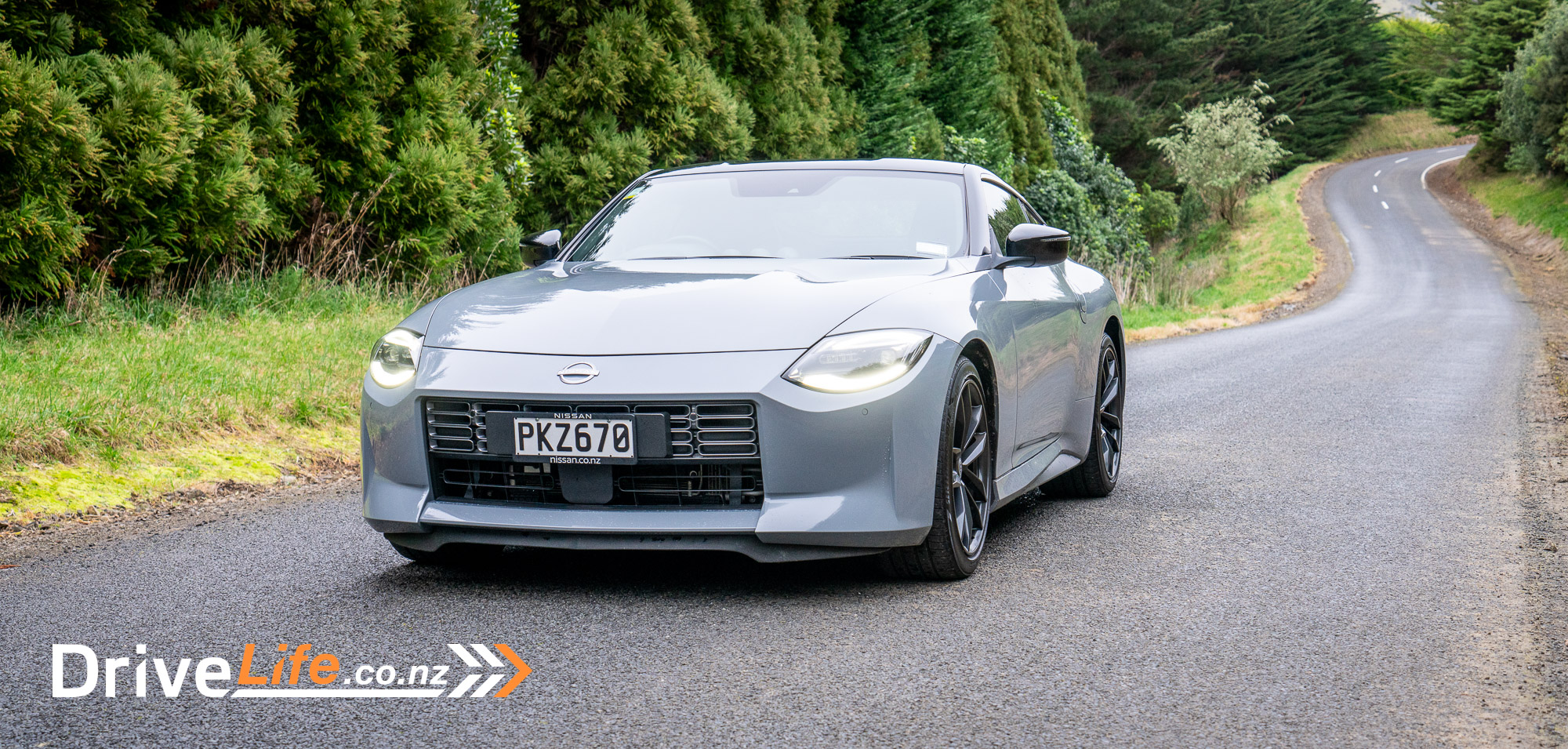
Underneath the bonnet, the Nissan Z packs a 3.0L twin-turbo V6, known internally as the VR30DDTT. Those familiar with Nissan engine nomenclature will notice the first two letters, “VR”, means the engine shares the same family as the Nissan GTR’s VR38DETT, whereas the previous-gen 370Z and older 350Z, had a “VQ” engine. Letters and numbers aside, the Z’s new engine outputs 298kW of power and 475Nm of torque – a substantial hit more than the 370Z’s power and torque figures of 240kW and 363Nm.
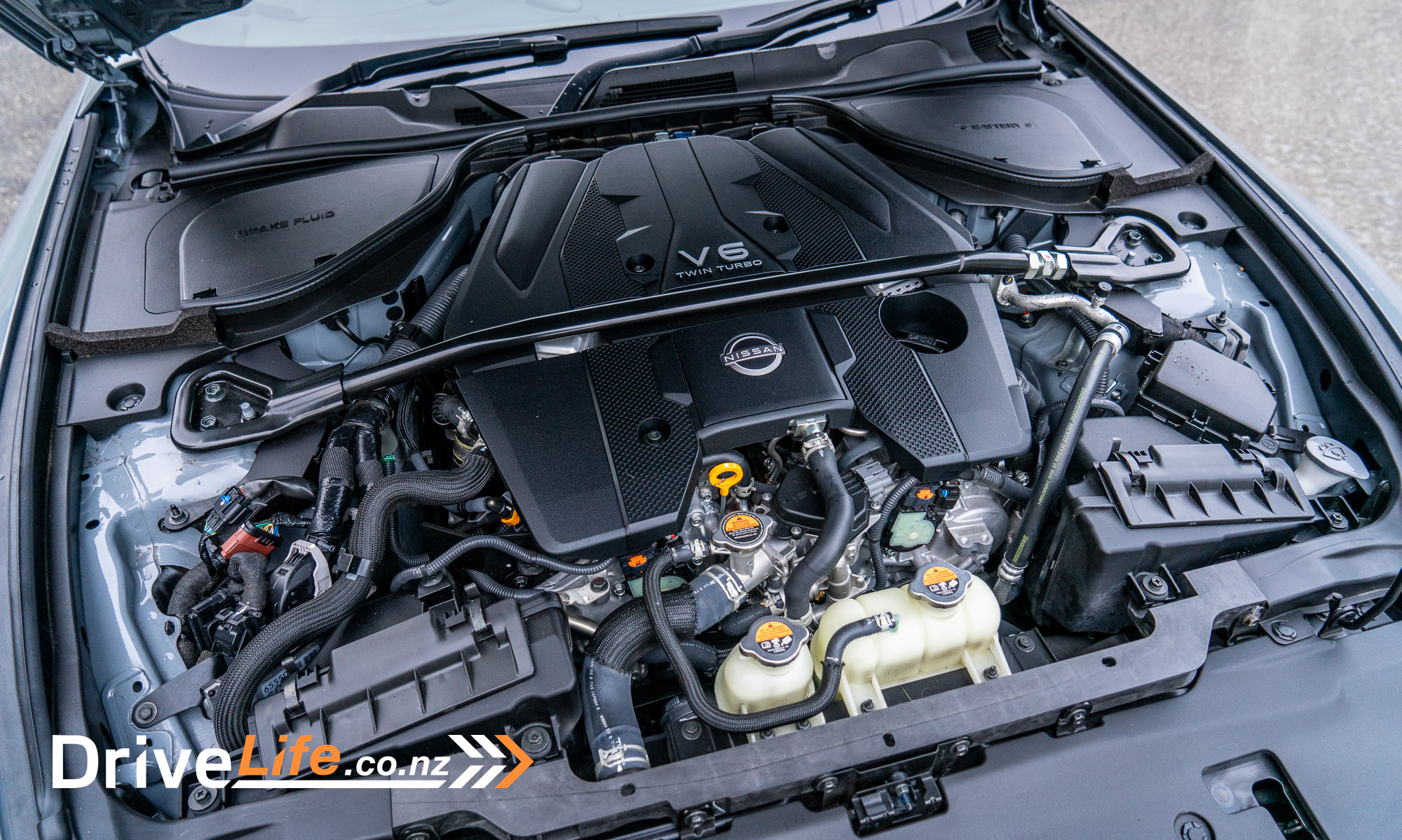
Importantly, more power and torque are produced down-low, meaning the Z has a much more potent powerband. In short, this Nissan Z hauls ass.
In a straight line, the Z can cover ground with proper pace. Plant your foot from a standstill, the Z will light-up its tyres before traction control steps in to supervise. That said, the traction control isn’t what I’d call a helicopter parent. It’ll let you hang the tail out a bit, before allowing you to truly scare yourself.
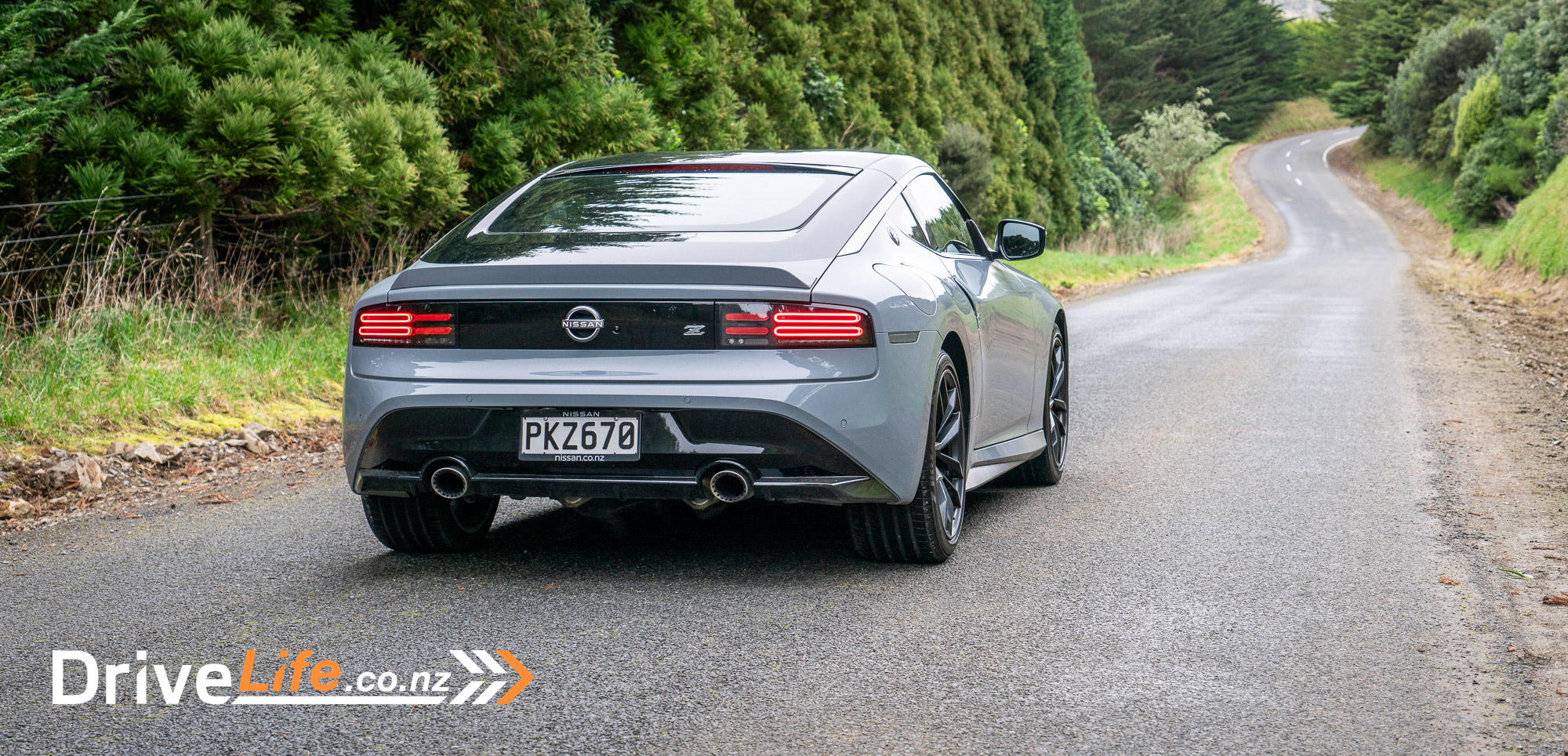
You should respect its power, however. Because, if you are too reckless, the Z could invoke a code-brown. I decided to give it the berries entering onto a motorway, and the Z nearly spat me into the other lane. Suffice to say, the Z is not for the faint of heart – a bit like a muscle car really.
Sending the power to the wheels is a 9-speed automatic gearbox (6-speed manual is also offered). The auto-box is a Jatco unit, developed for Mercedes-Benz. Despite seemingly sophisticated origins, the gearbox tuning isn’t quite as smooth nor as on the ball compared with the 8-speed ZF gearbox used in the Toyota Supra. It’s a fine gearbox, all considered. But, on occasion, you may notice a lumpy shift in lower rpms.
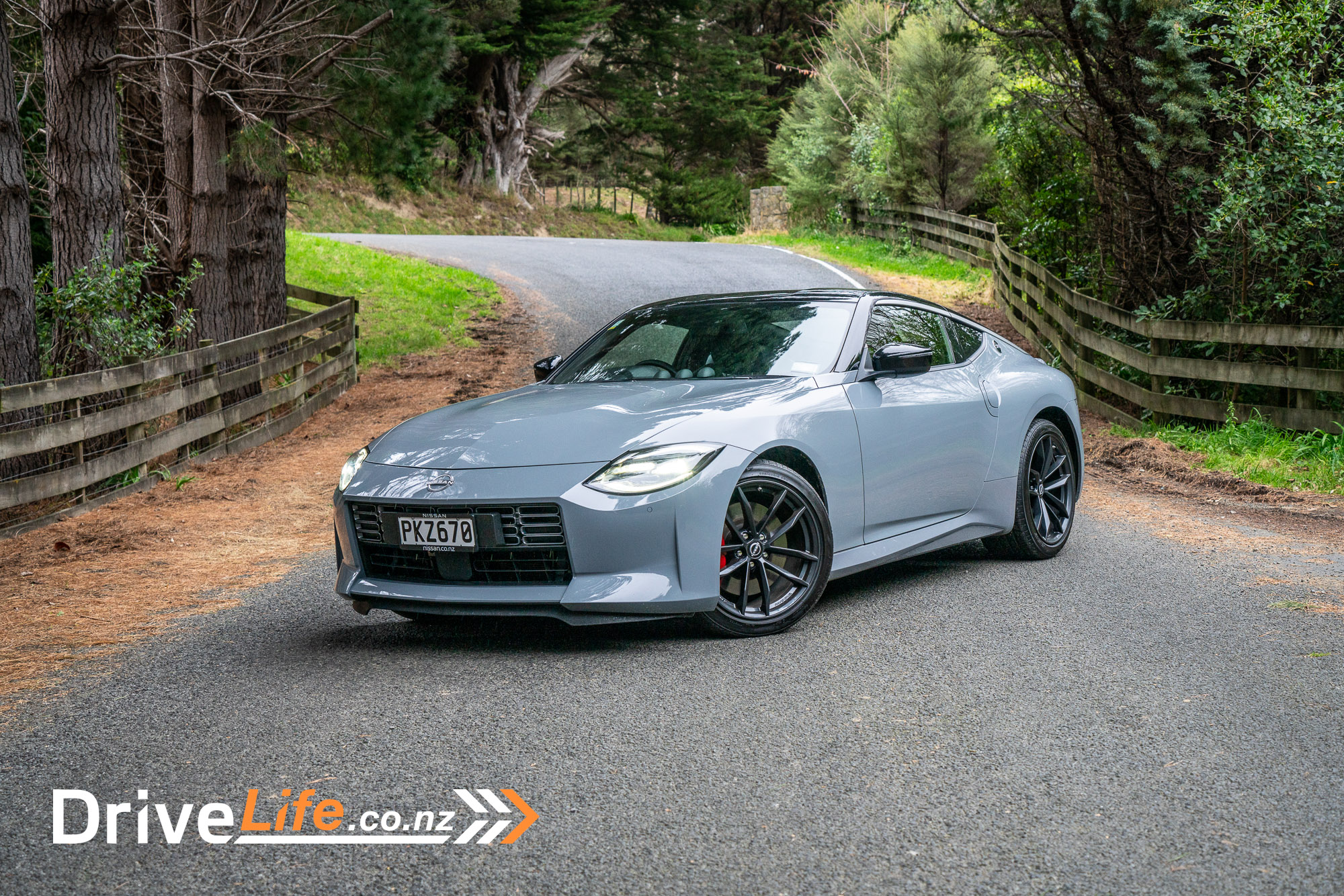
Despite being a nine-speed, Nissan appears to have tinkered with the Z’s gearbox to make it feel a bit more old-school. There’s slightly more rev-drop shifting between gears when you’re on the power making each shift seem more deliberate, and more eventful. If you were going for outright speed, you’d make these shifts as close in ratio as possible, for short and snappy shifts so that you’re constantly in the powerband – kinda like how the Supra does it. Nissan’s approach means you’ll probably lose in a drag race to the Supra, but it makes it feel more engaging.
This, among many other tweaks, delivers that old-school feeling that’ll charm you about the Z. It’s a modern car that feels engineered to feel reminiscent of a 90’s sports car. It’s only more apparent through the chassis.
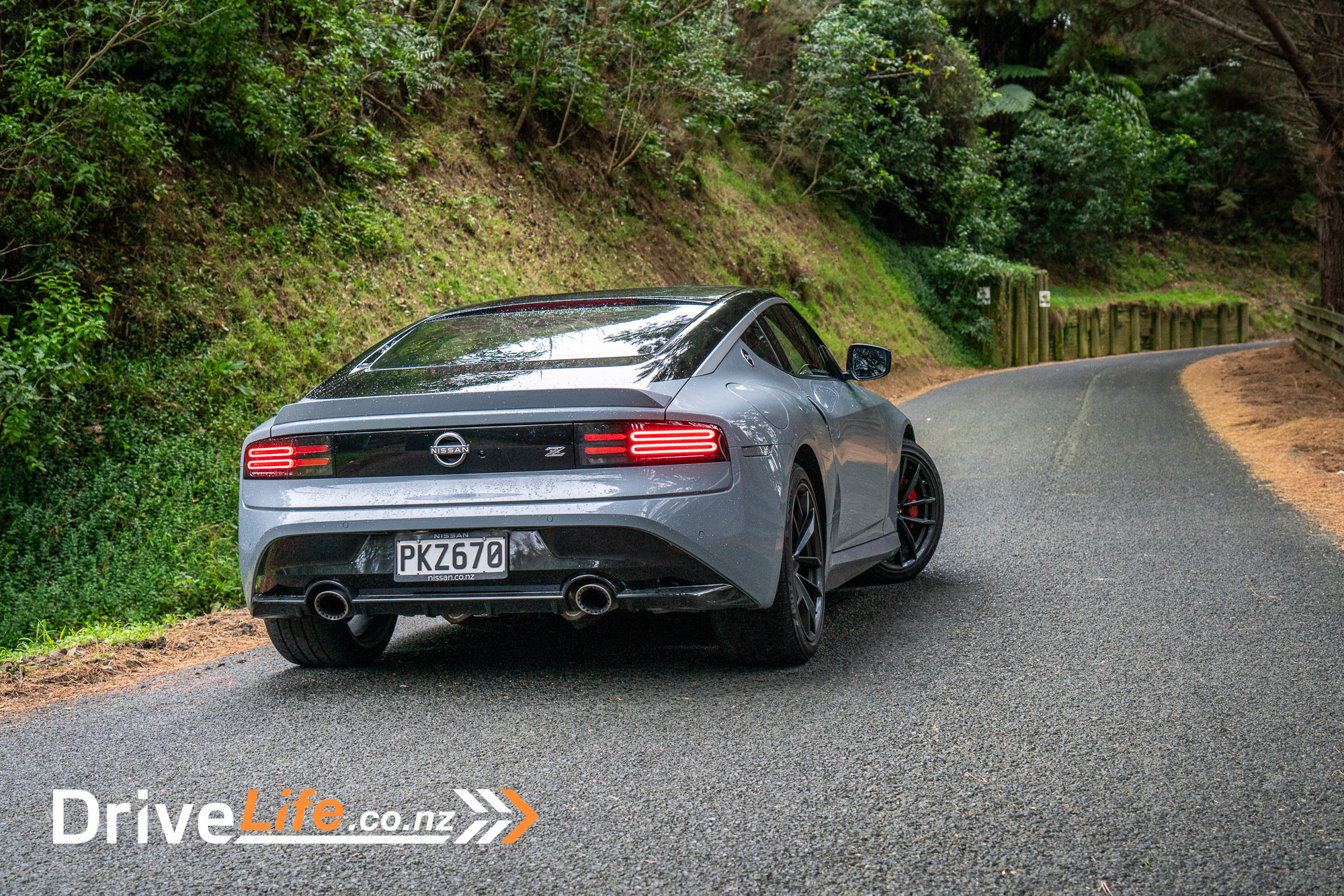
The Z feels smaller, lighter and more connected than many a modern barge. There’s an analogue feeling, which makes you feel connected directly to the chassis through your inputs. Under braking, the front-end loads up well, and the nose turns-in well too. That said, the Z’s handling isn’t what I’d call precise, but instead, I’d call it “about right”. The Z can hustle through corners, for sure. But, it never managed to set nor find a flow through faster, sharper corners. In some cases, it felt like there were some unbalanced secondary motions, which made you behave a bit more gingerly with the throttle. The next limitation was grip. It’s objectively good, but the standard suspension and tyre choice aren’t quite matched to the Z’s propensity to throw down its power.
I’m sure some after-market coilover suspension and some dedicated tyres would be transformative for those looking to go fast on the track. However, in stock form, the Nissan Z’s power and performance is more lairy and tail happy as opposed to sharp and precise. Less Gran Turismo, more Tokyo Drift.
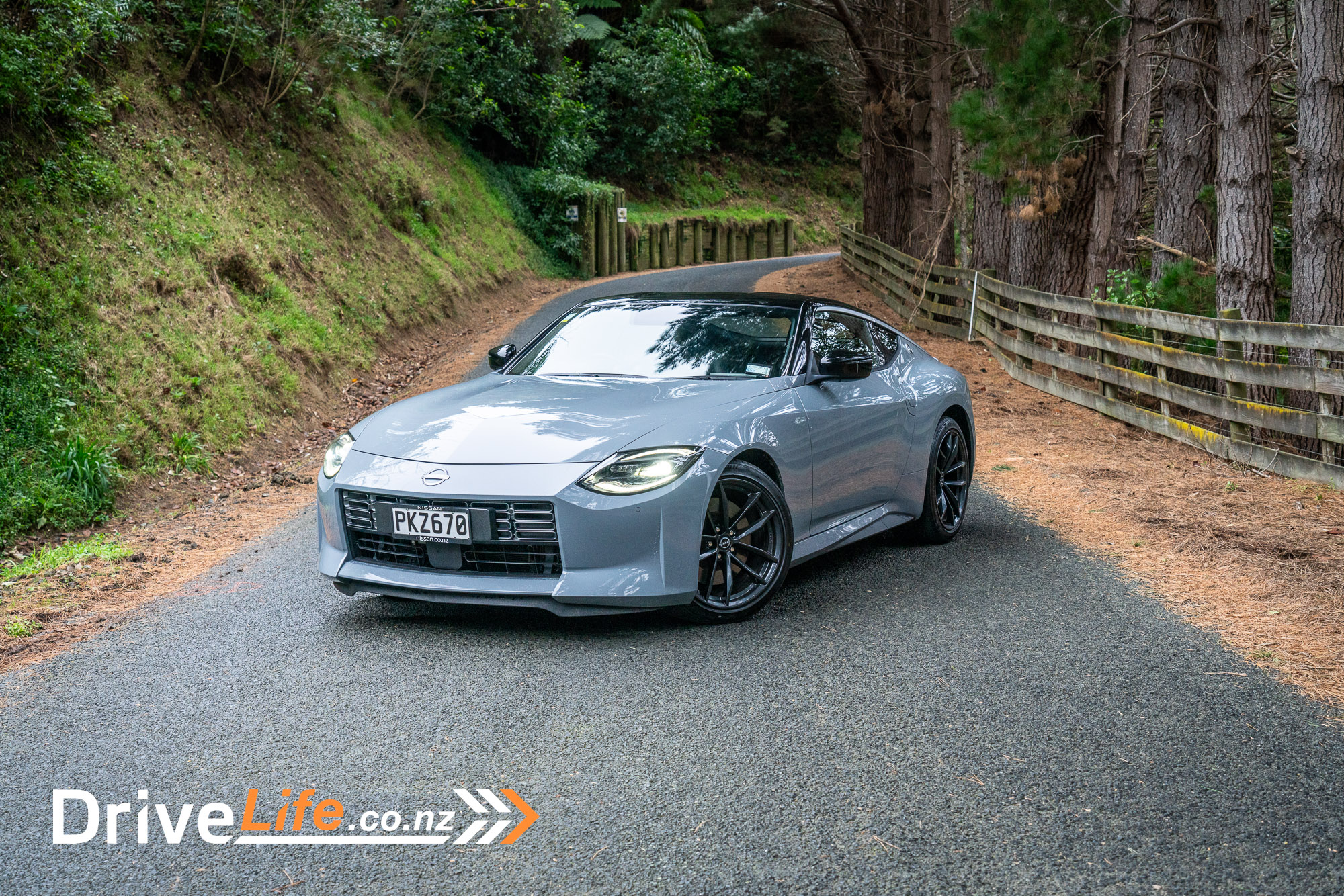
So yeah, the modern Z is a bit of a daily driving drift-rocket. It’s akin to a big dog that likes a bit of playful rough-housing. Great fun, and if that’s what you’re up for, you’ll adore the Z.
Speaking of, daily driving the Z is eminently doable. The suspension is well damped and won’t beat you up on rougher roads. If anything, it’s quite compliant for a sports car.
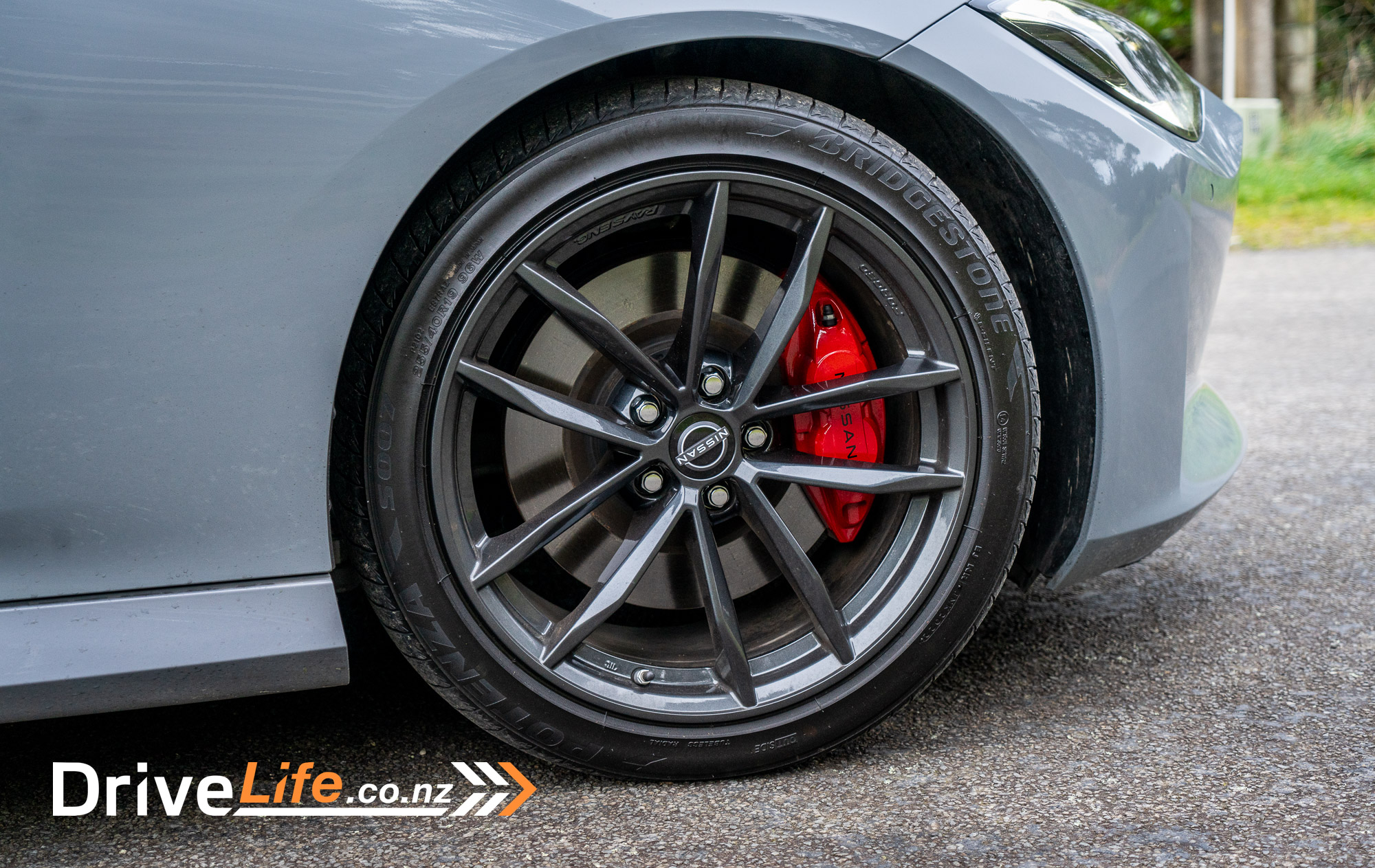
The only downside is the fuel economy. If you’re prepared to be sensible, you’ll be able to keep in the Z hovering in the low-mid 10L/100km range. But if you’re driving the way Nissan intended, expect to see higher. I scored 15L/100kms at one stage.
Another note for the daily driver, the adaptive cruise doesn’t seem to work if you’re going downhill – I didn’t understand this either.
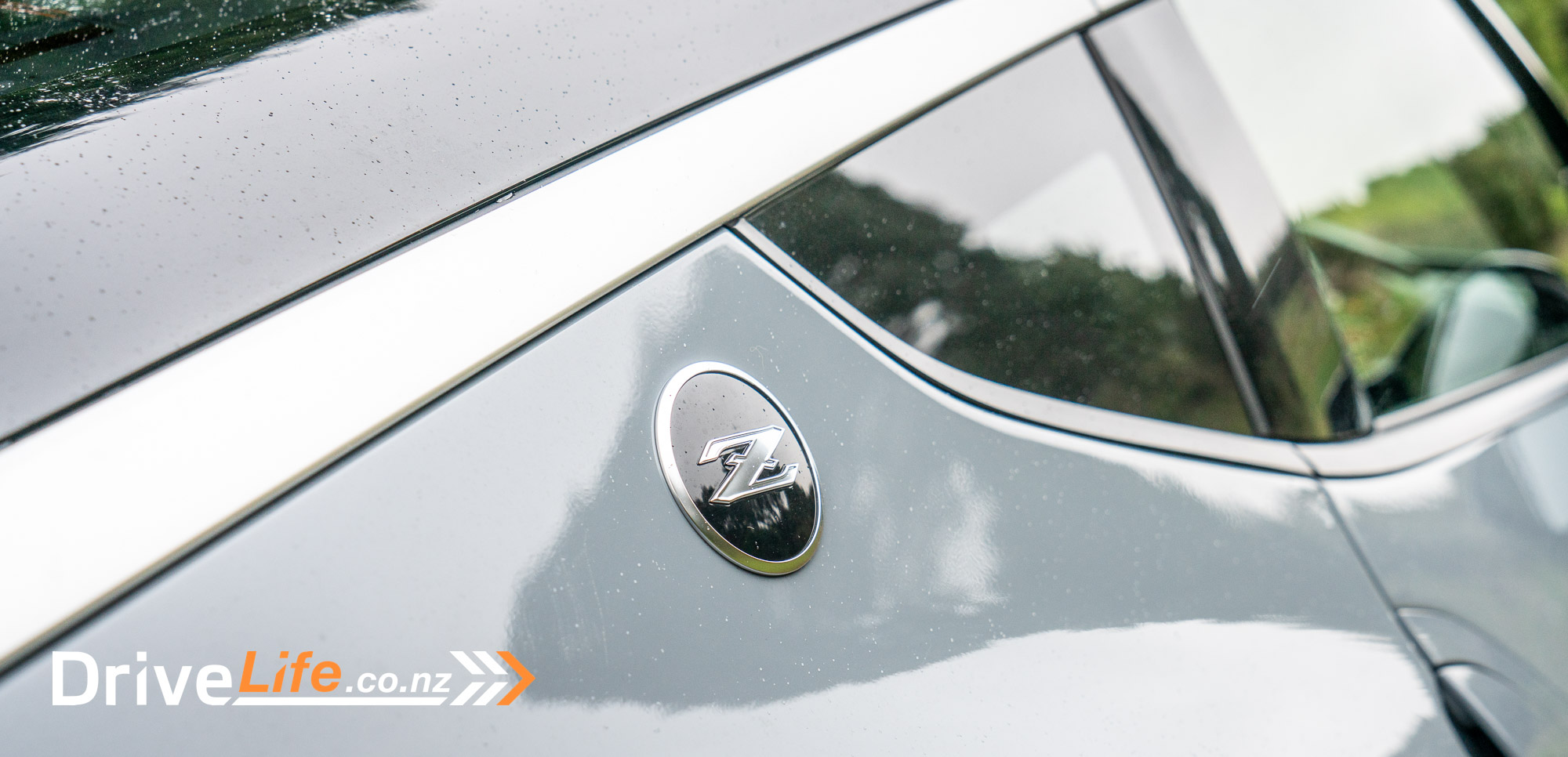
2023 Nissan Z: Fred’s Point Of View
After Alistair had the Z, I took it for a week’s commuting duties, starting with a 600km drive to Hawera and back to work on our V8 Project car. In total, I’d spend 1,000km behind the wheel of the Nissan Z, and honestly, I grew to like it more each day.
Because I didn’t start out loving it. Heading away from Wellington on a wet day, it seemed just a slightly heavier touch on the gas pedal would see the back wheels start to spin, and possibly the rear start to go sideways. This is not a car for an inexperienced driver.
Once on the motorway, things settled down, with just a slight throb of that V6 engine keeping me company. After resetting the trip meter, my fuel consumption to Levin was a thrifty 6.6L/100km, proving that this engine can be economical if you really try hard. And I did find it hard to resist putting my foot down a bit, as the performance and noise from this motor is intoxicating.
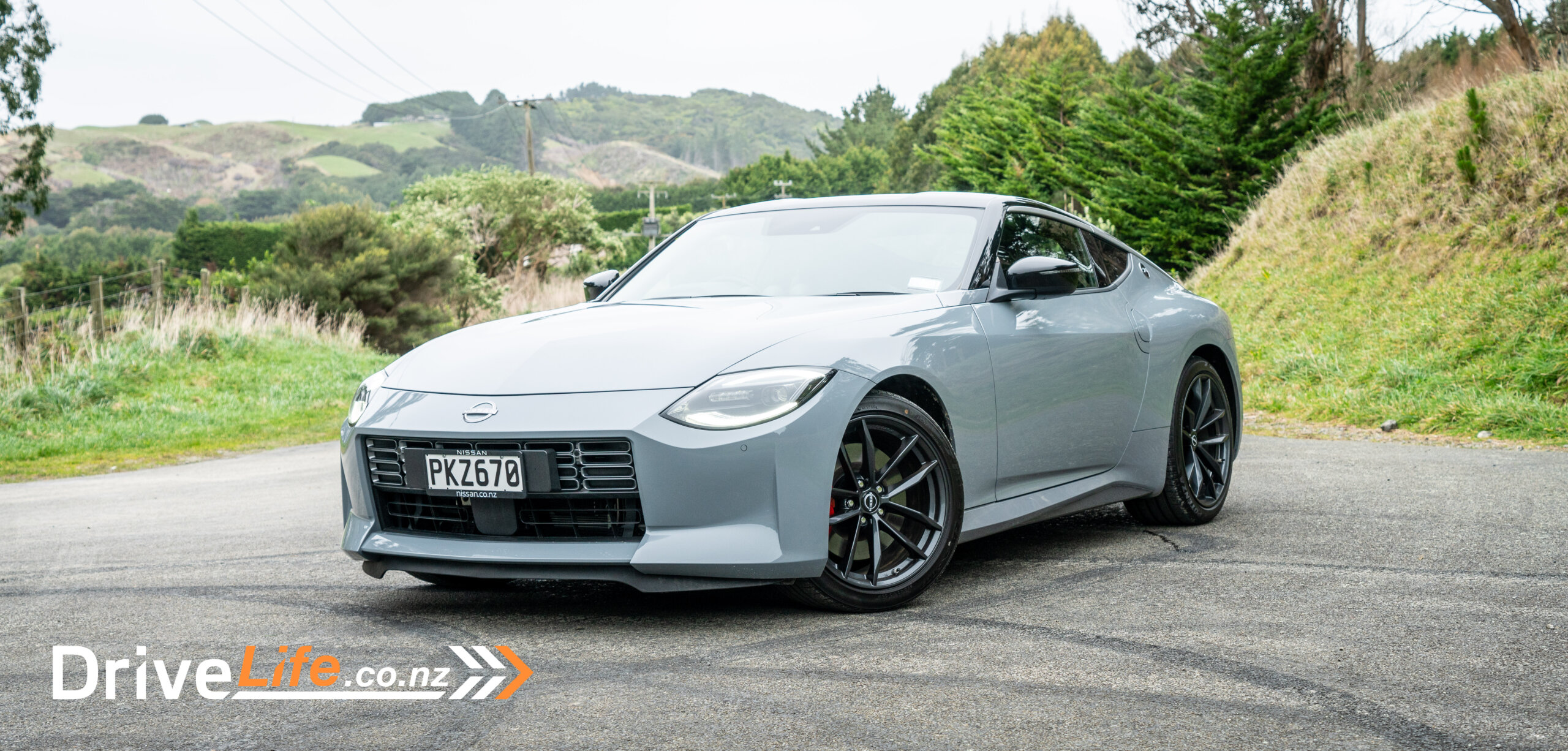
Reflecting on the car while driving, I was a bit surprised to see no parcel tray cover, and the centre console seems very cheap – and sounds/feels cheap. But I love the gauges on top of the dash, a real throwback to the 240Z. In the mirrors, the car’s haunches stick out, and I always love to see that in any car – it reminded me of the Mazda MX-5 GT that I had driven to Hawera recently, to work on our project car.
The seats feel comfy and the side bolsters hold you in place very nicely although weirdly the front seats are different in design. The car’s ride quality is a lot better than I had expected, but what I didn’t expect was no automatic wipers at $85K, and adaptive cruise control that doesn’t work down a hill! It’s fine if there is a car in front of you, but if there isn’t, the Z will simply speed up. Later in the week I’d nearly be caught out by this when going down Ngauranga Gorge, and the car was doing 95km/h just before the speed camera – in an 80km/h zone. Nissan really needs to get that sorted out.
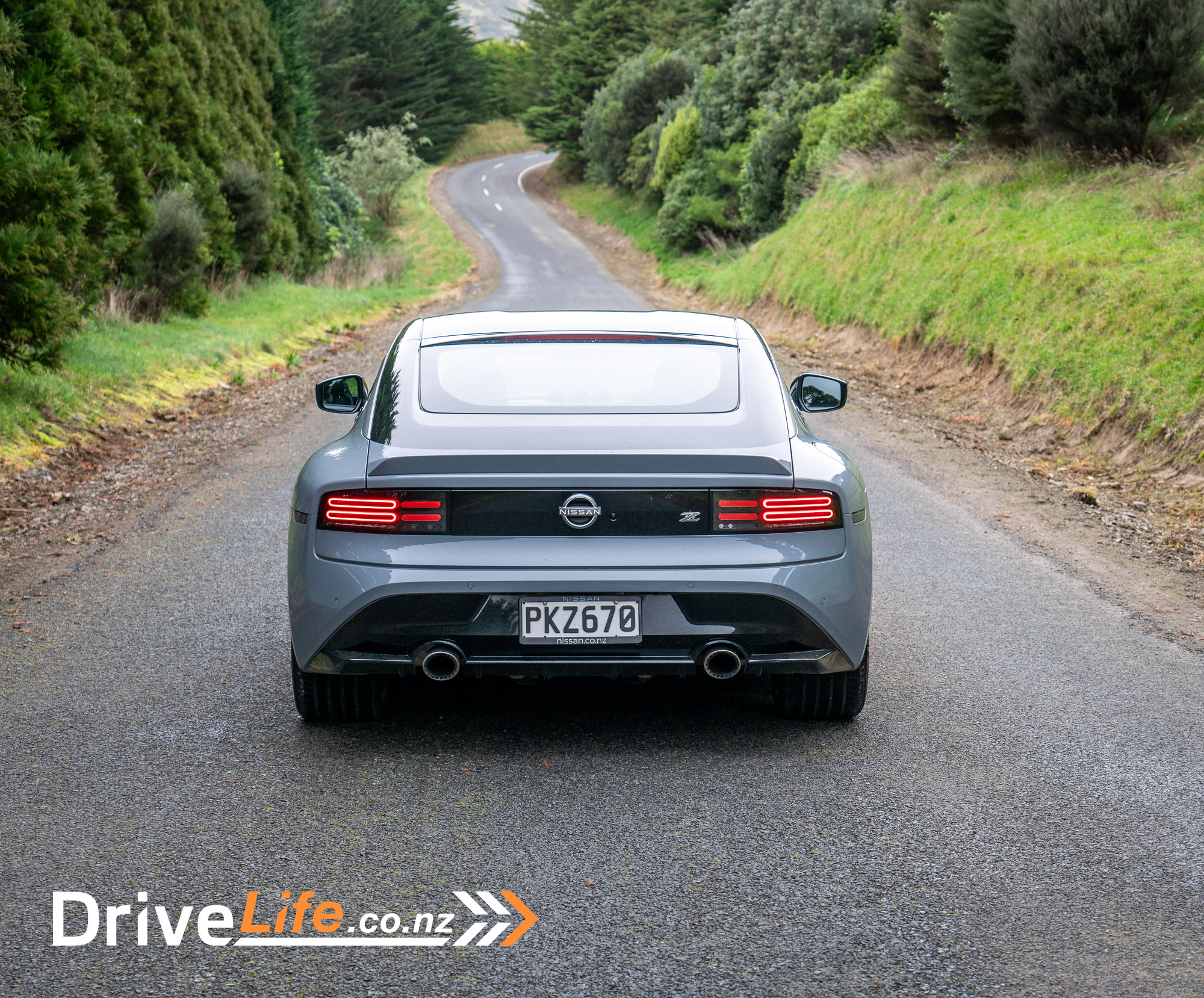
Time to gas up in Bulls, and when full my range was showing as 726km, which I felt was excellent. Heading east towards Hawera, and I noticed the car tramlines at times, which can be disconcerting. I’d get used to this over the week, but it’s not ideal. It also seems to need lots of little steering corrections even when travelling straight ahead – again, not ideal. But on the whole for the weight of this car, it handles just fine. That rear-wheel drive adds bias which can make it quite a bit of fun. I’m sure Alistair will cover off the handling better than I have, as I didn’t really get to test it on any tight, curvy roads.
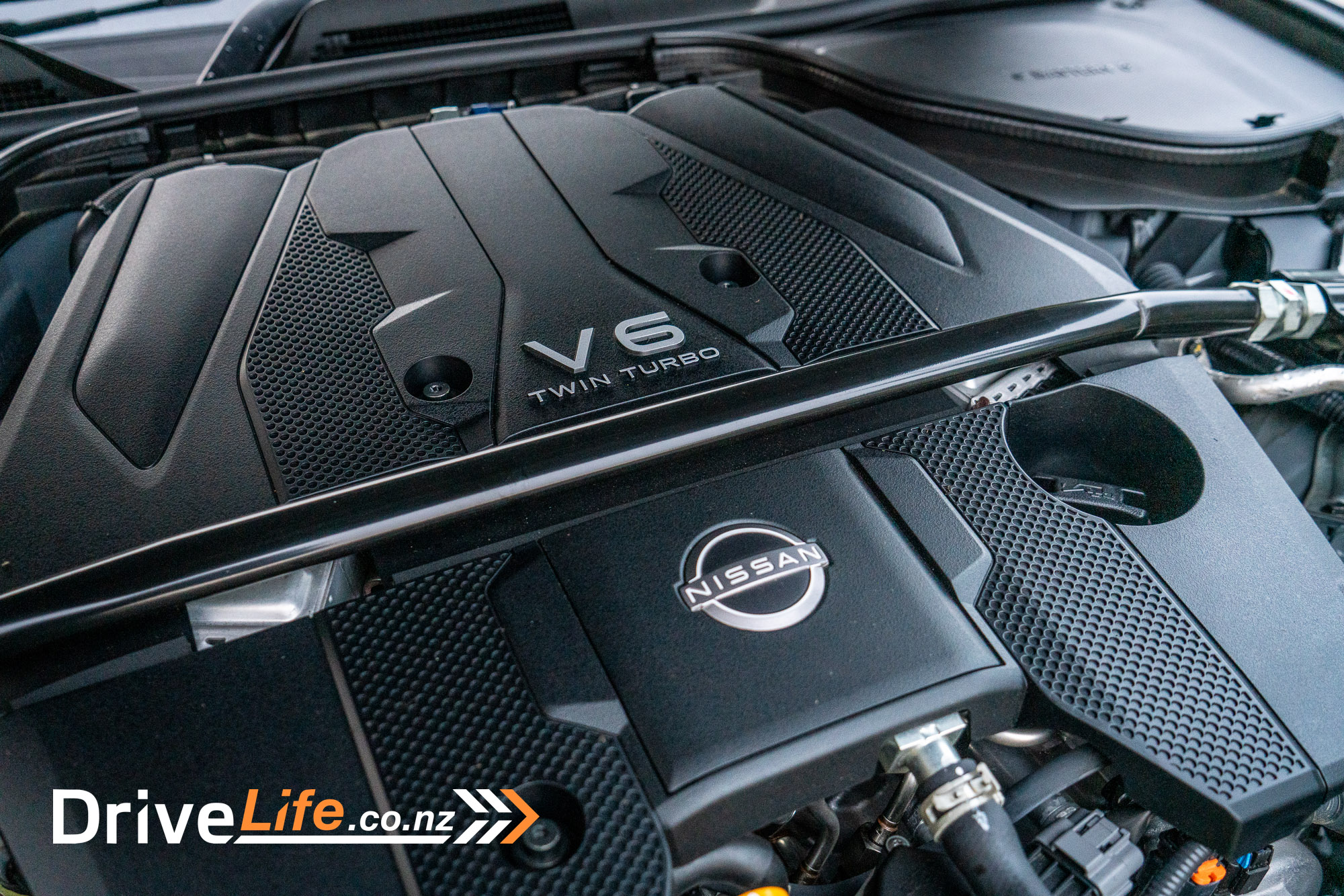
Arriving in Hawera my fuel consumption had risen to 7.7L/100km, still pretty good. The return trip at the end of the weekend simply proved all I had already learned about the Nissan Z; it’s quite old school, but in a good way. It demands respect on any road in any conditions. I could get the rear wheels to spin in the dry even at 80km/h. In the wet, I could get them to spin at any speed – and that was with the car in Normal drive mode.
After my 1,000km of driving the Nissan Z, my overall fuel consumption was 9.0L/100km. I think I could have EASILY pushed that up a lot higher simply by using more gas pedal, but I think that just showed me that this car is a bit wasted on New Zealand roads. Use it anywhere near its potential and you are going to lose your license and your wages quickly.
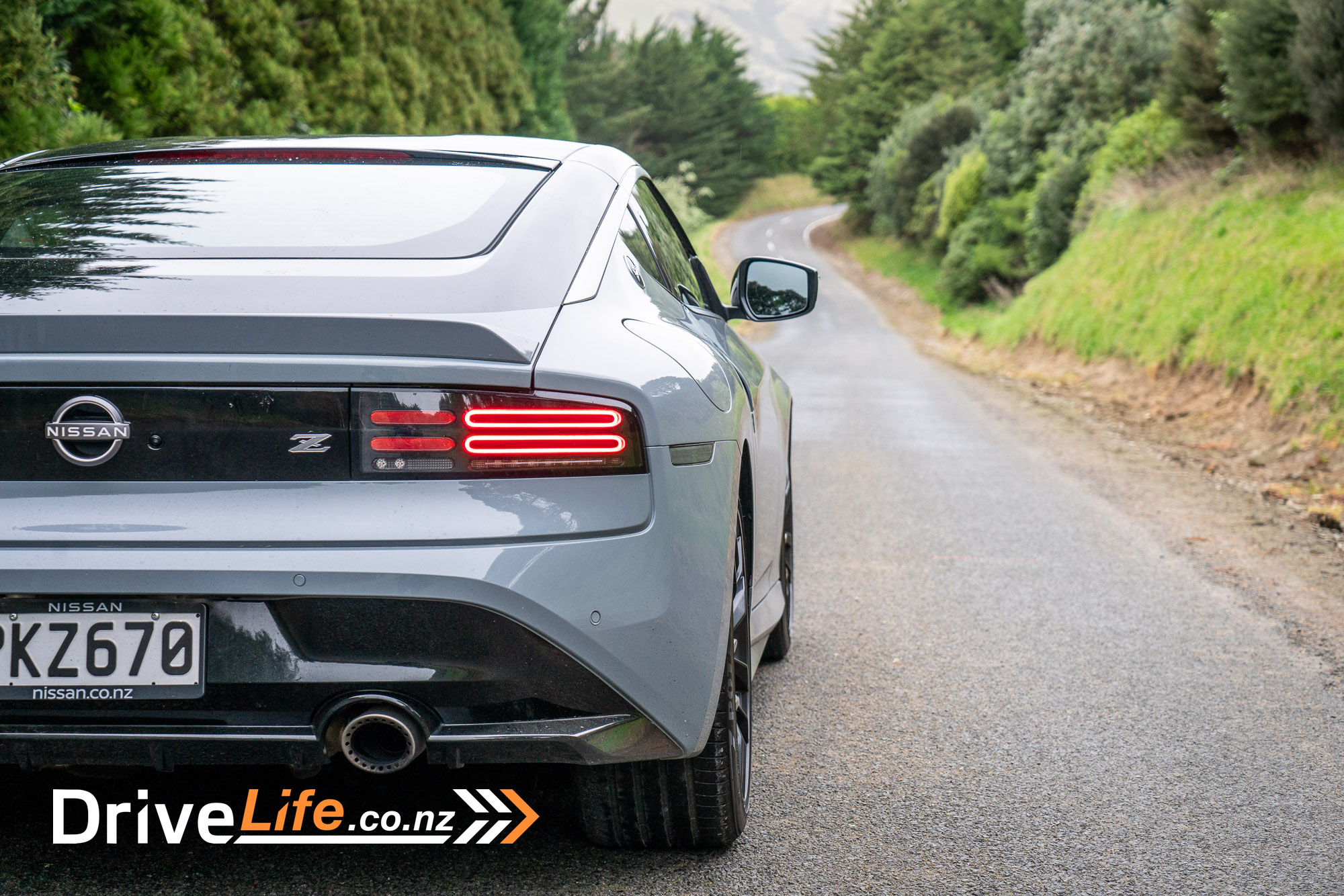
2023 Nissan Z – Specifications
| Vehicle Type | 2-door sports coupe |
| Starting Price | $84,990 |
| Price as Tested | $86,230 |
| Engine | 3.0-litre twin-turbocharged 6-cylinder petrol |
| Power, Torque kW/Nm | 298/475 |
| Transmission | 9-speed automatic transmission |
| Spare Wheel | N/A |
| Kerb Weight, Kg | 1,594 |
| Length x Width x Height, mm | 4380 x 1845 x 1315 |
| Cargo Capacity, litres | 241 |
| Fuel tank capacity, litres | 62 (95 or higher) |
| Fuel Economy, L/100km | Advertised Spec – Combined – 9.8 Real-World Test – Combined – 10.4 (but be warned) Low Usage: 0-6 / Medium Usage 6-12 / High Usage 12+ |
| Towing Capacity Kg, unbraked/braked | Haha, no. |
| Turning circle, metres | 11.0 Small: 6-10m / Medium 10-12m / Large 12m+ |
| Warranty | 5-year/150,000km Factory Warranty 5-year Roadside Assist |
| Safety information | ANCAP Rating – 5 stars – Not assessed Rightcar.govt.nz – 5 Stars – PKZ670 |
Have you enjoyed this review? Be sure to join our monthly email newsletter list so you don’t miss a single car review!


